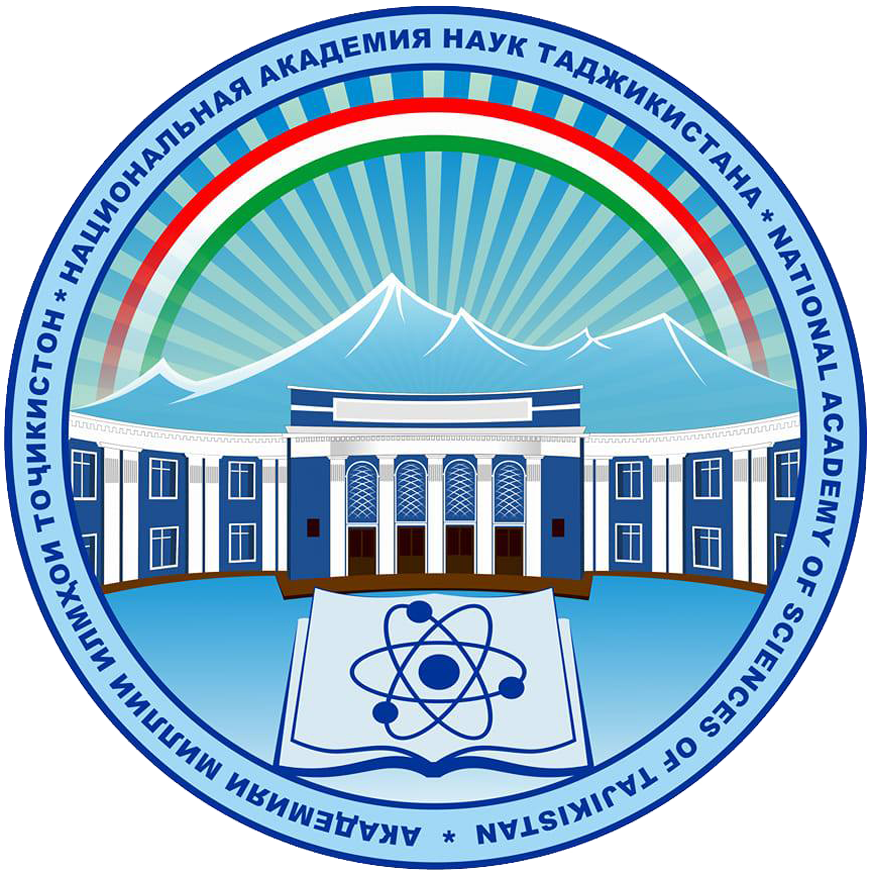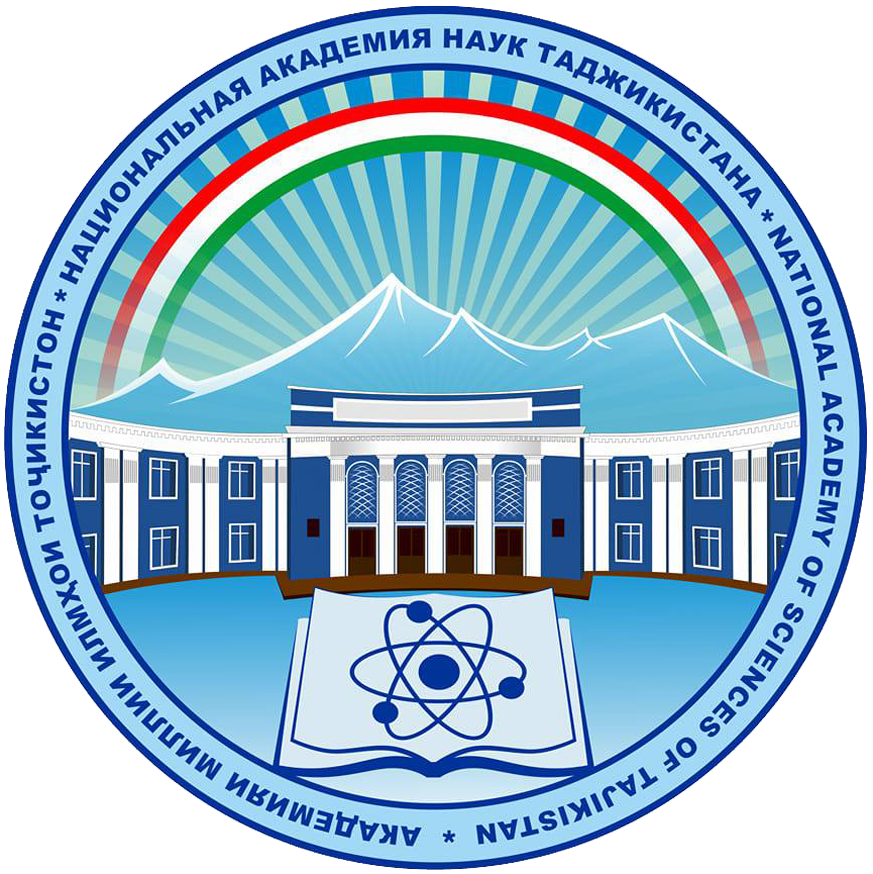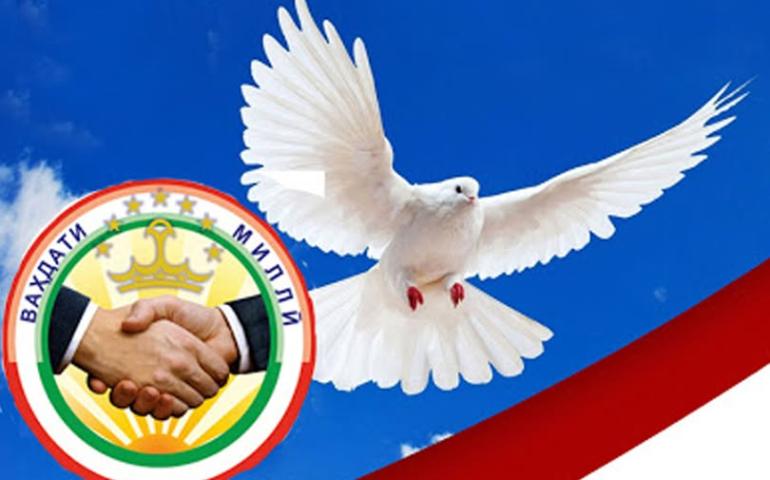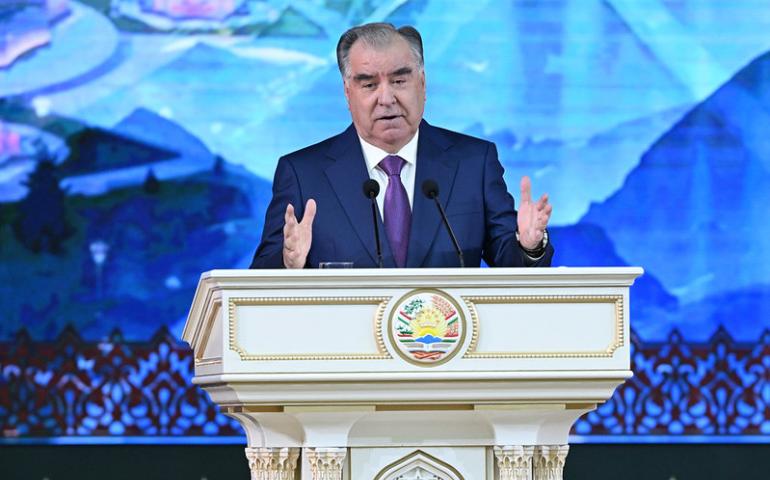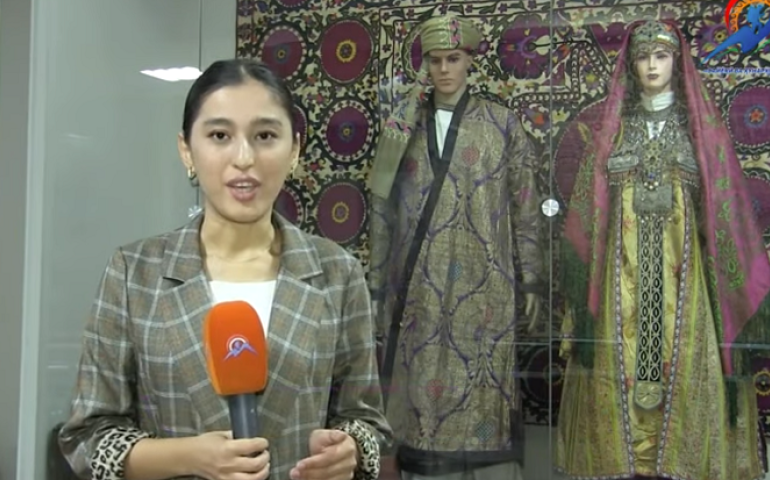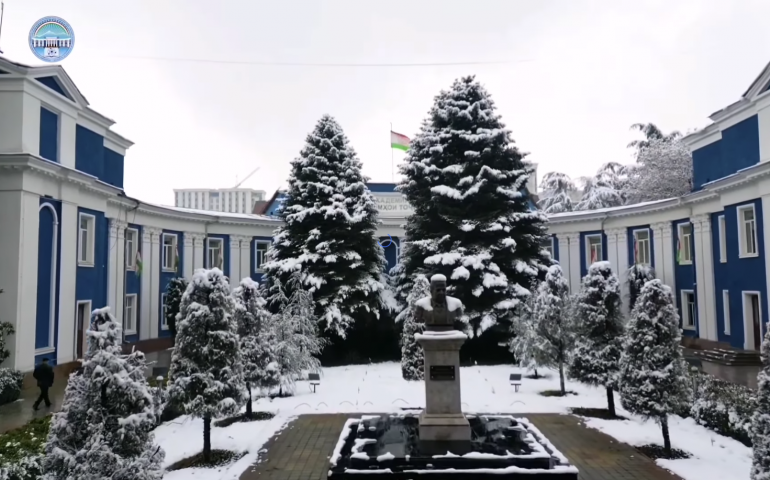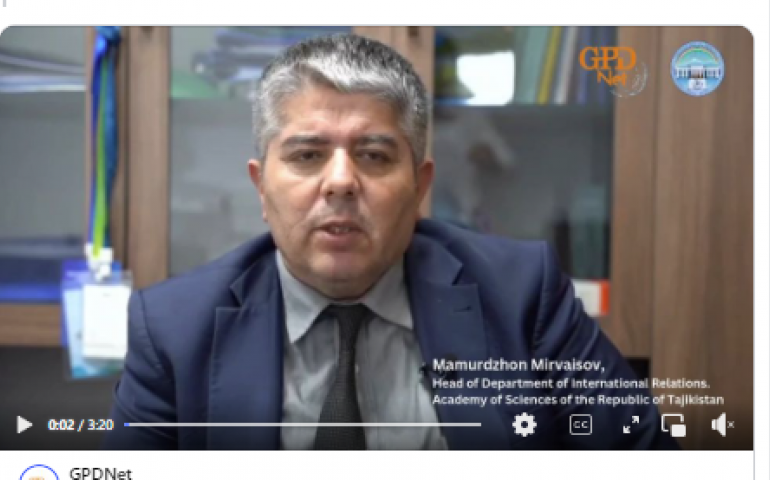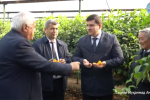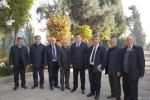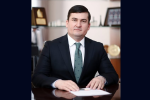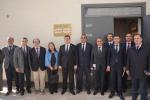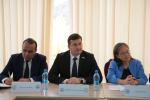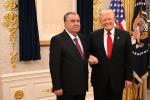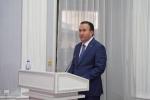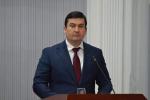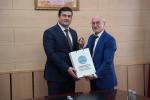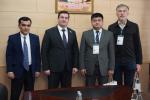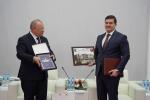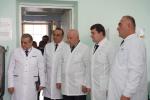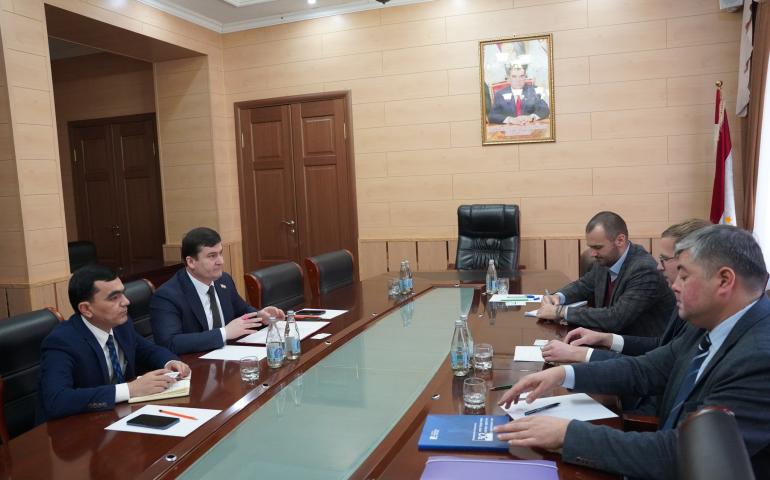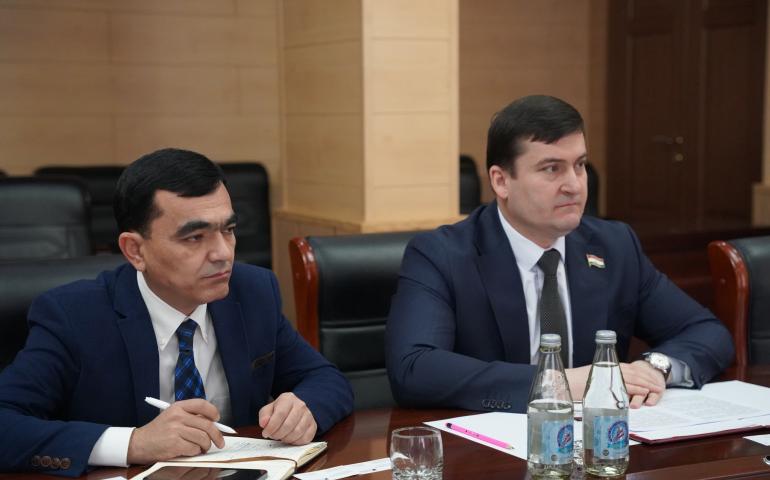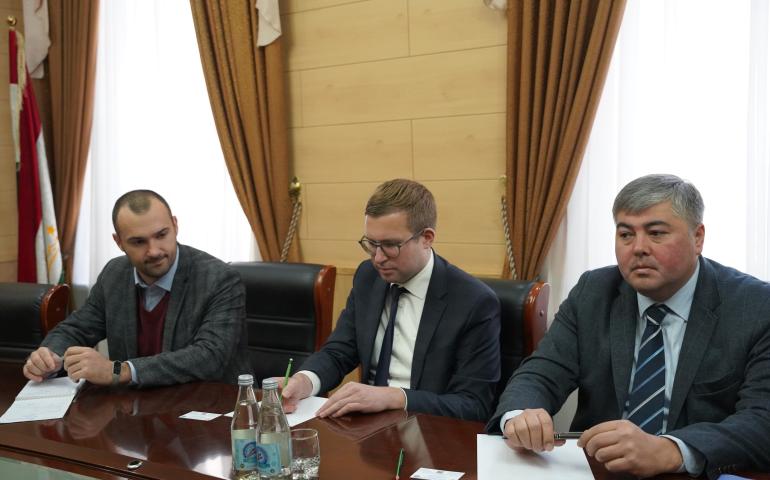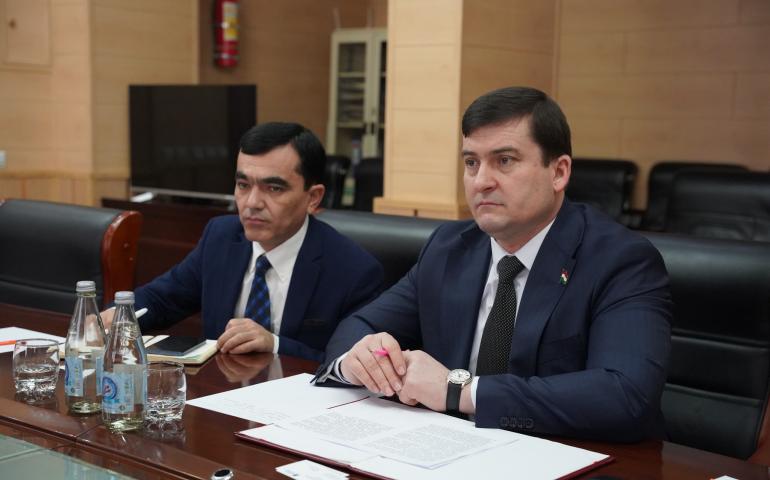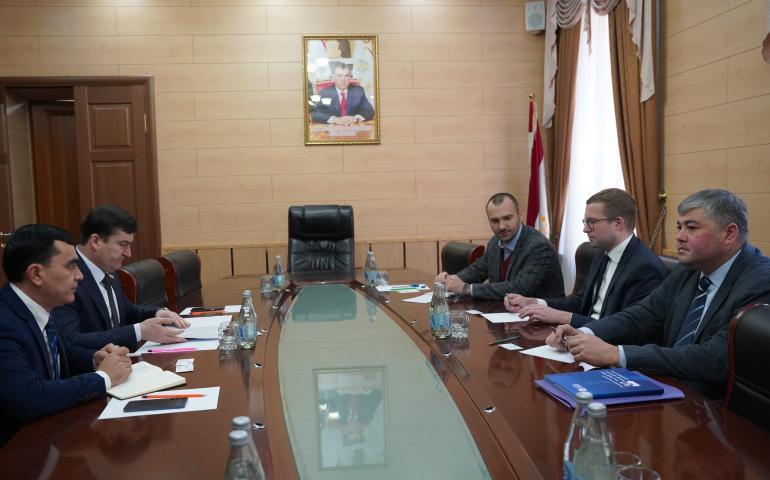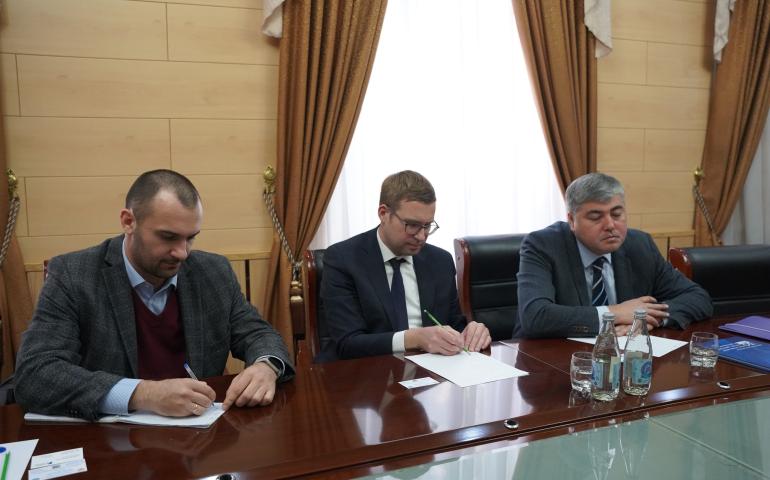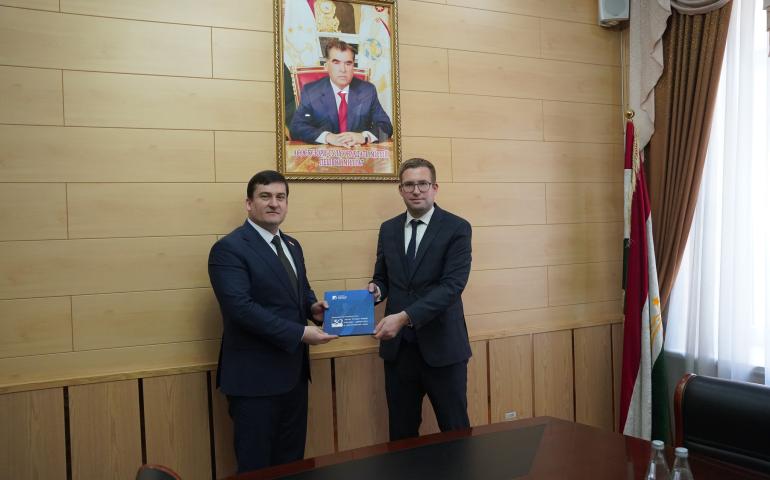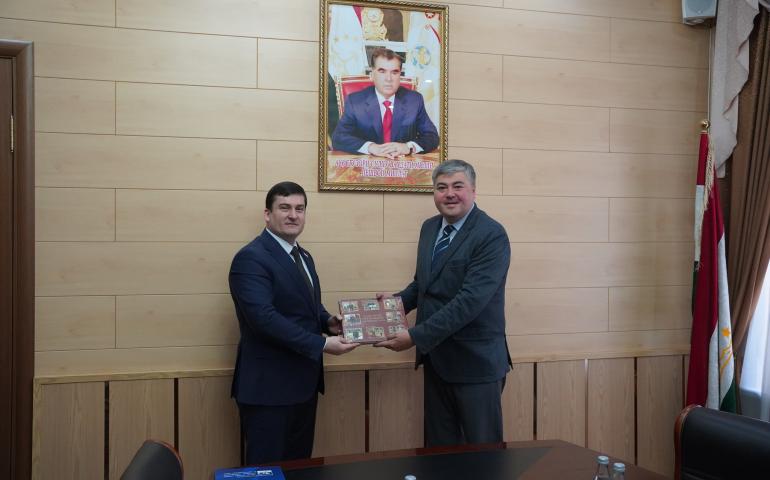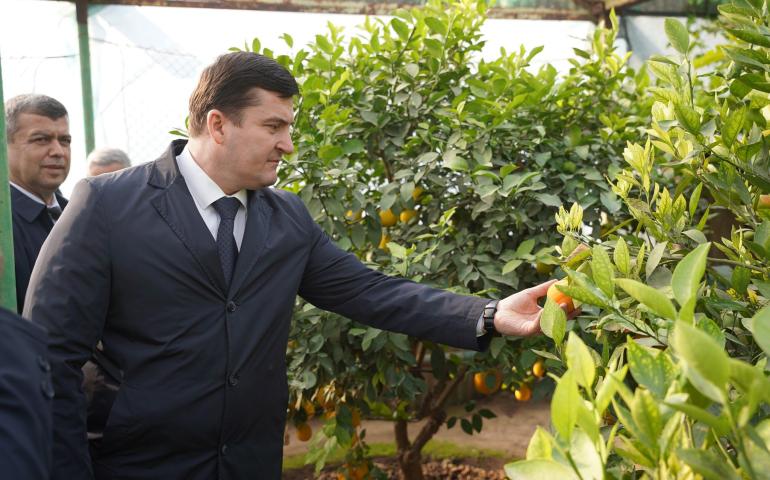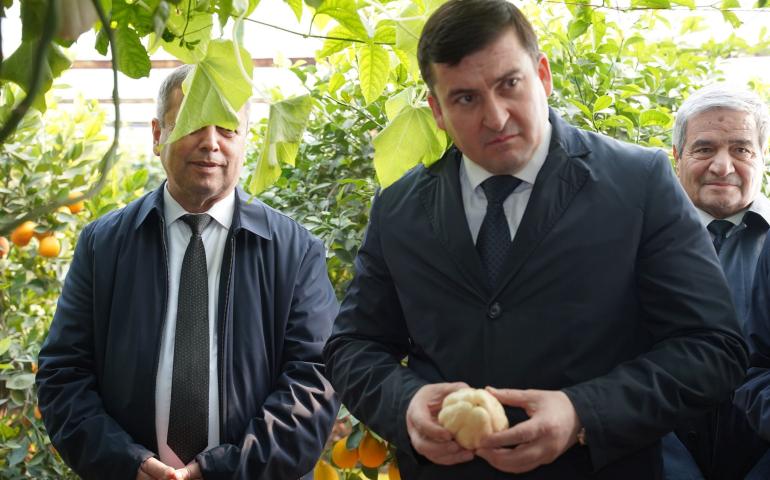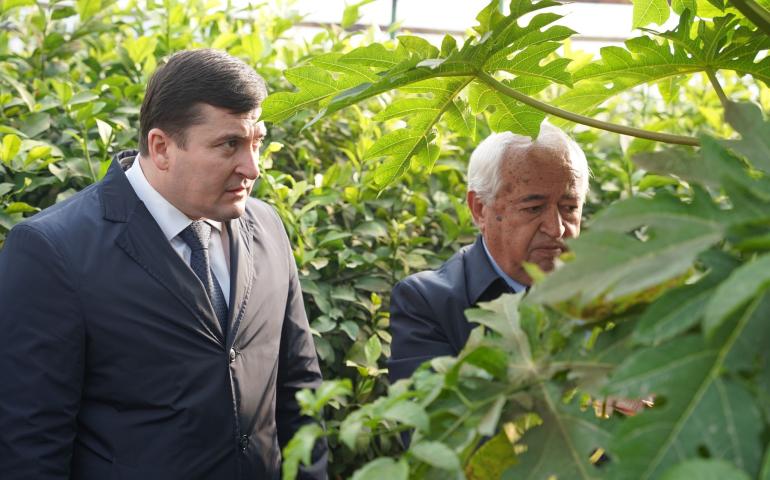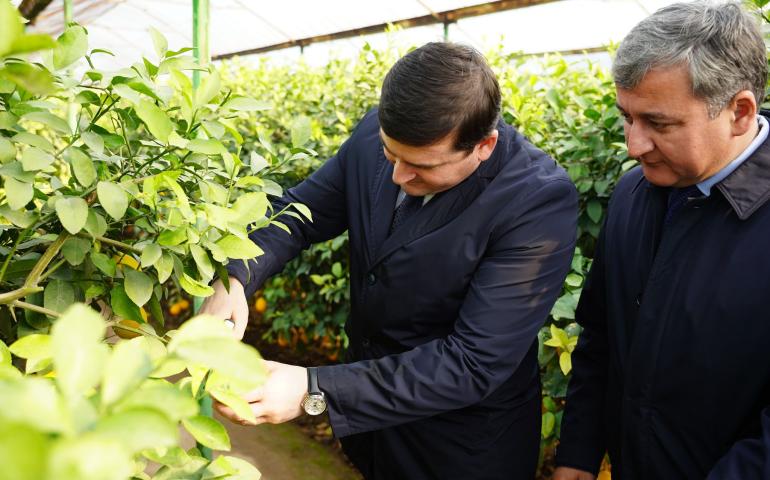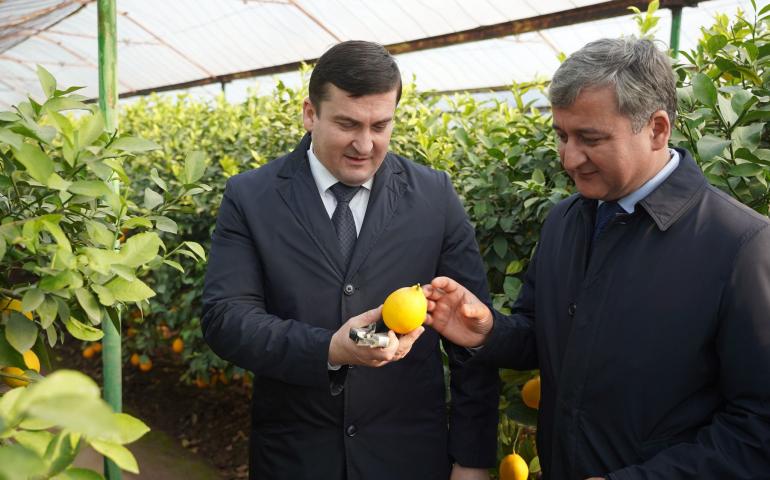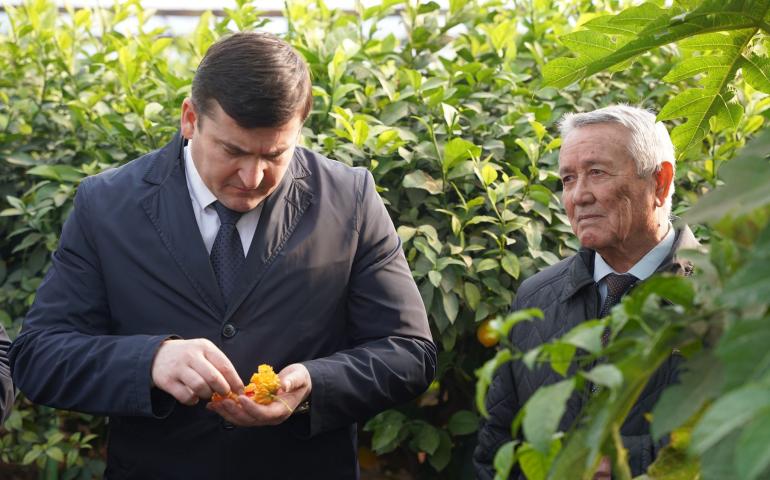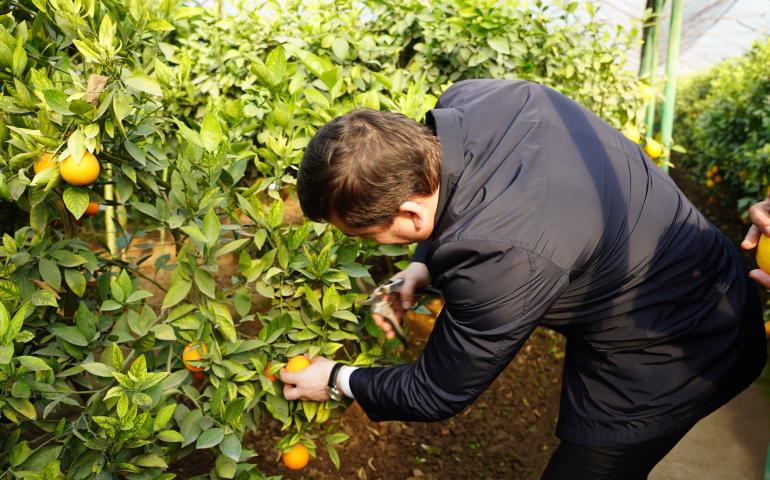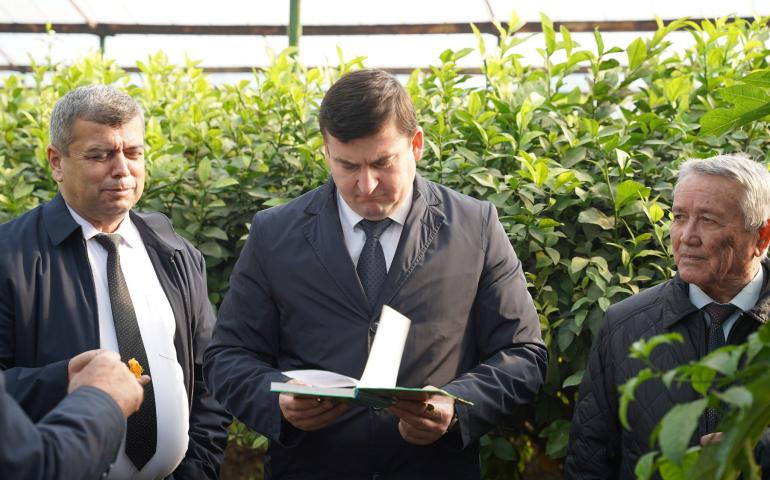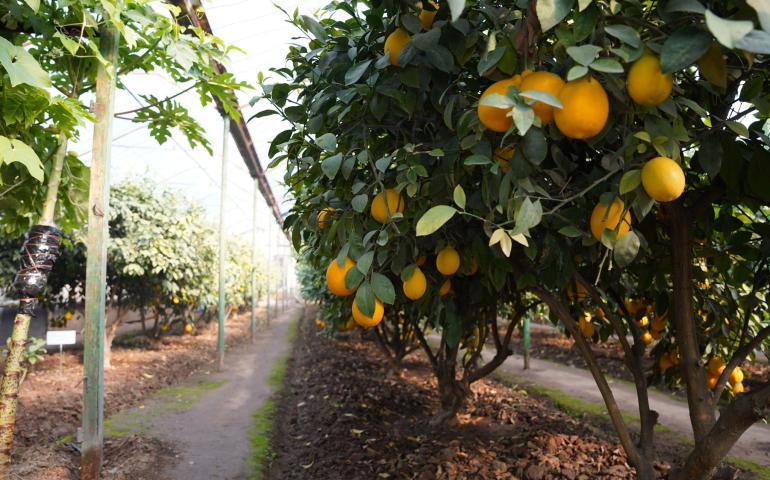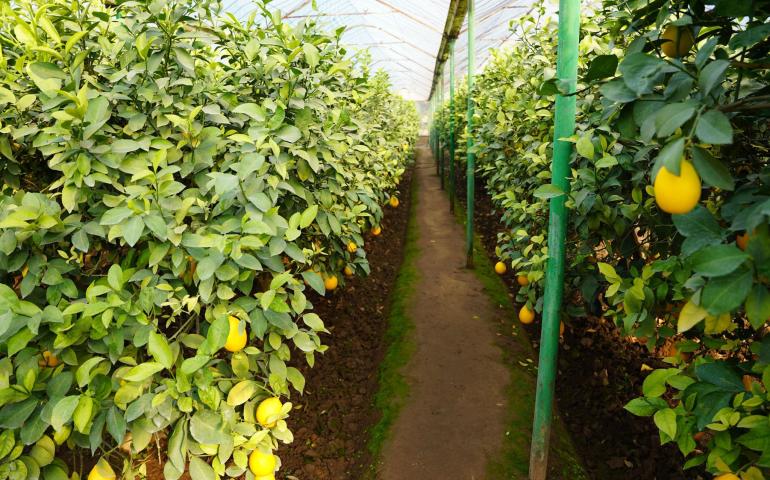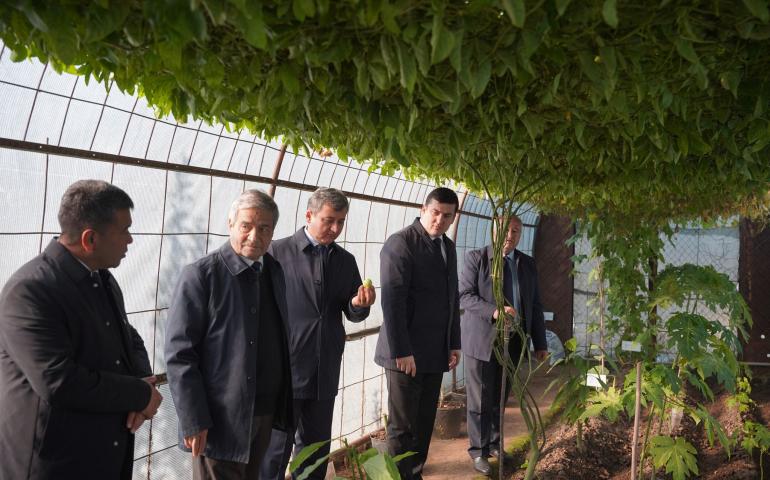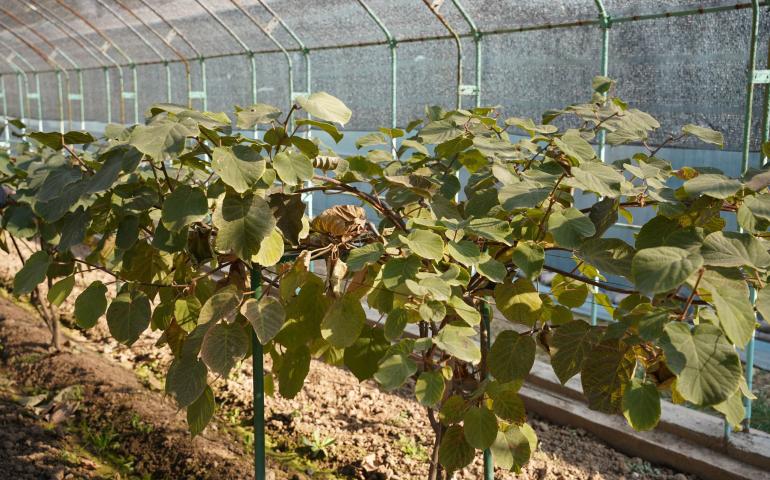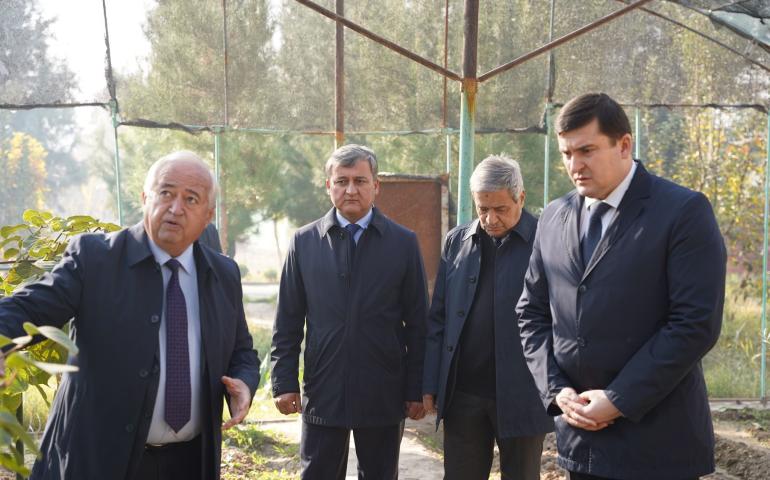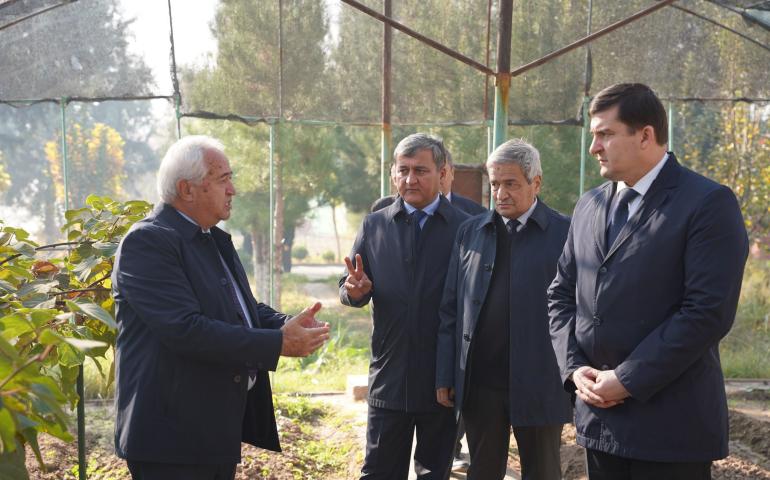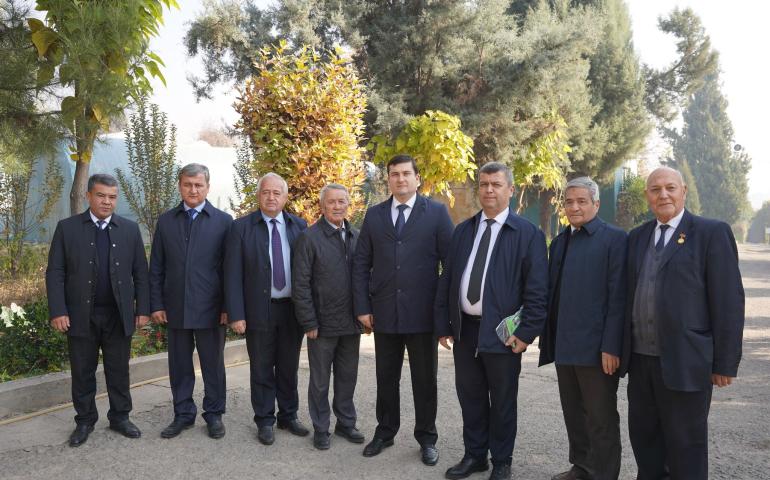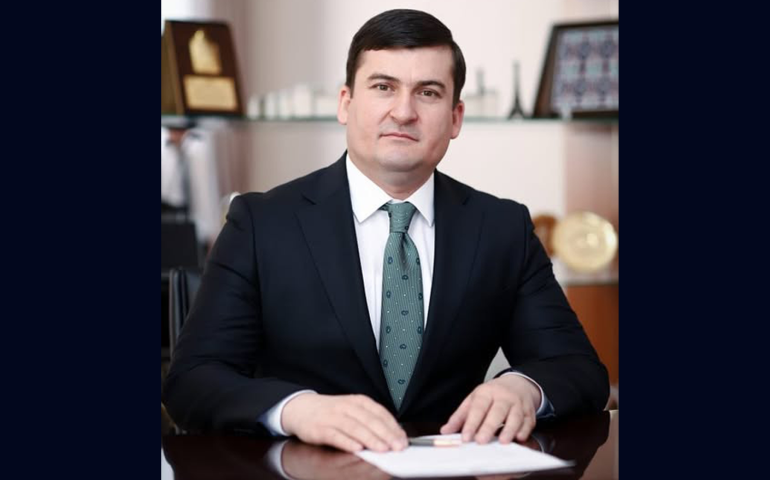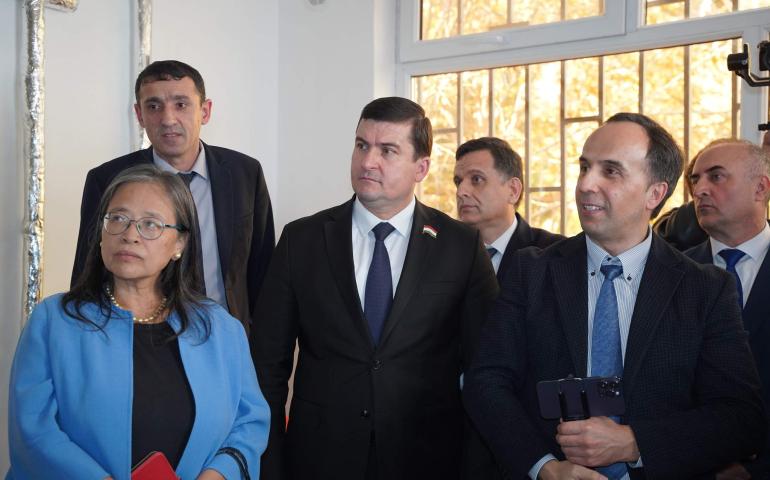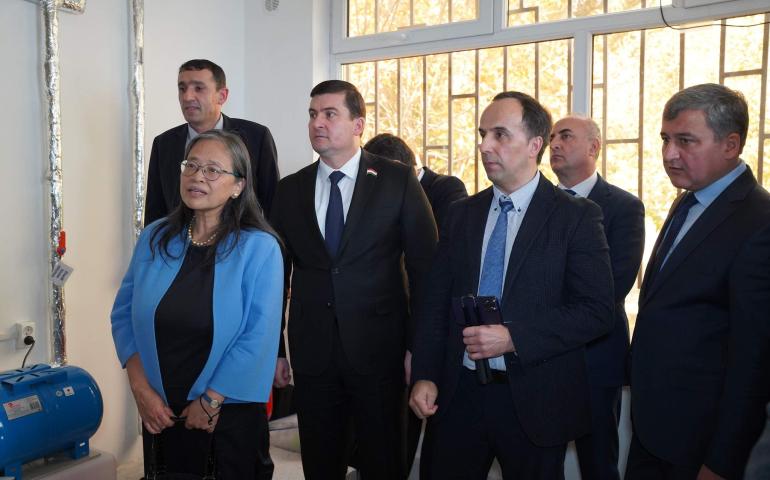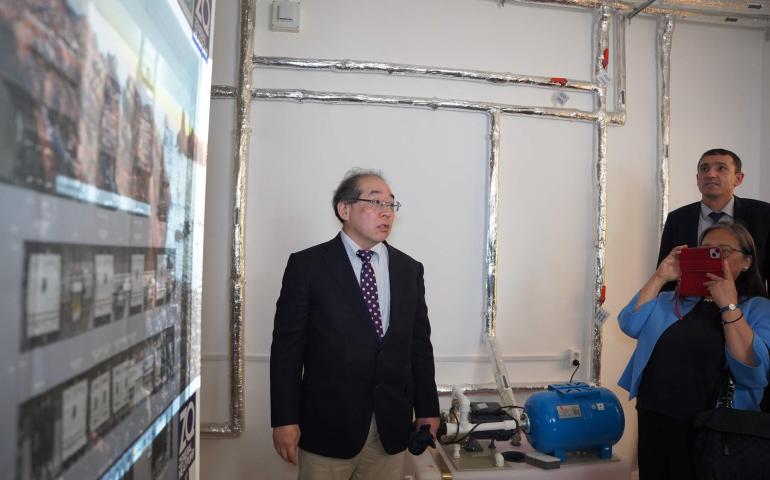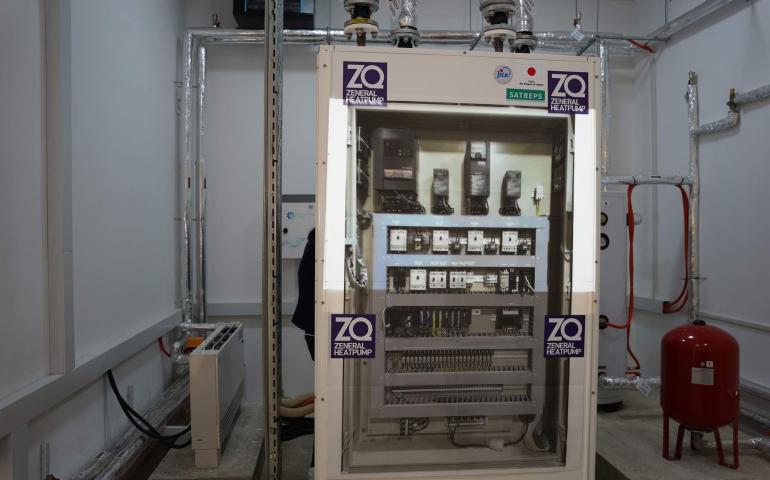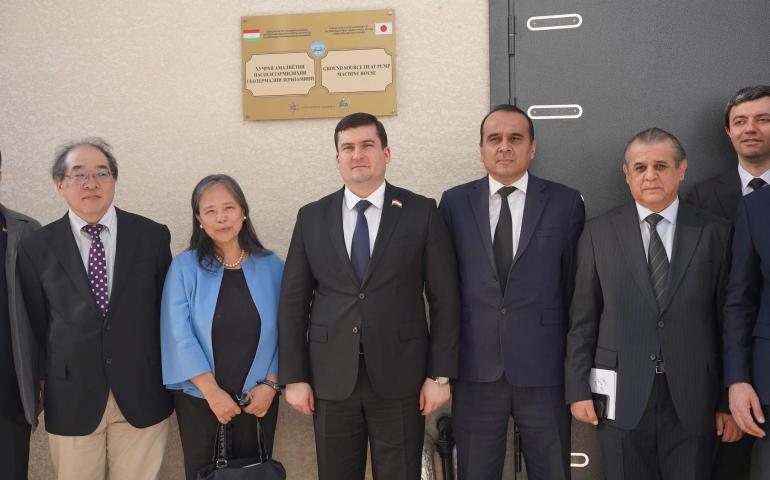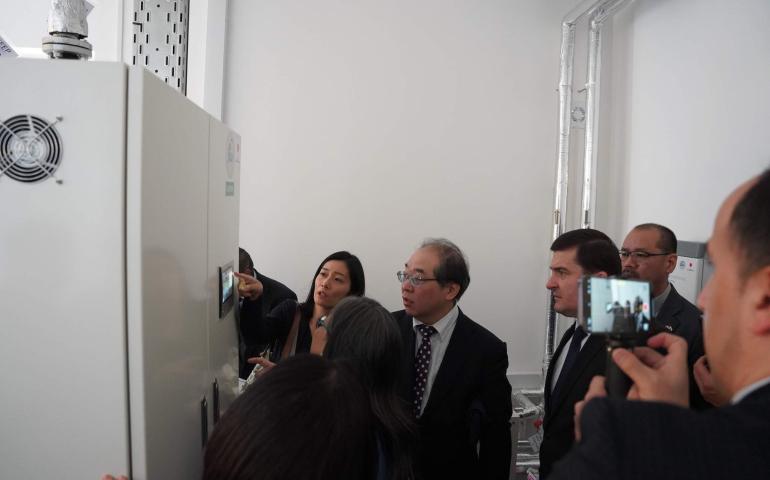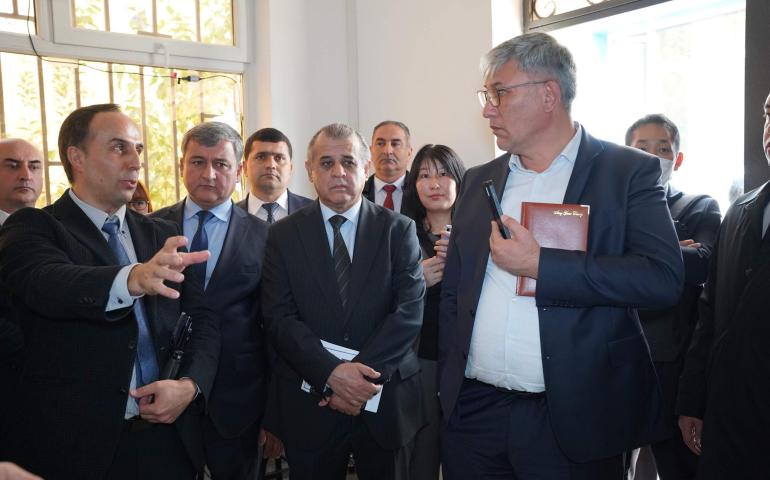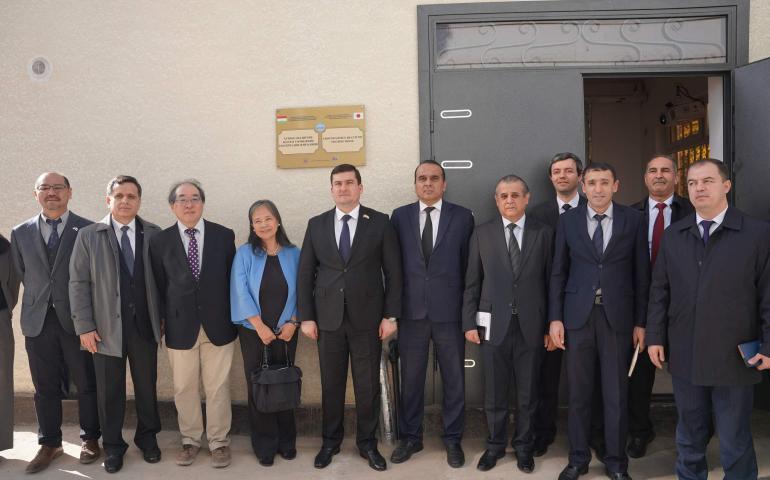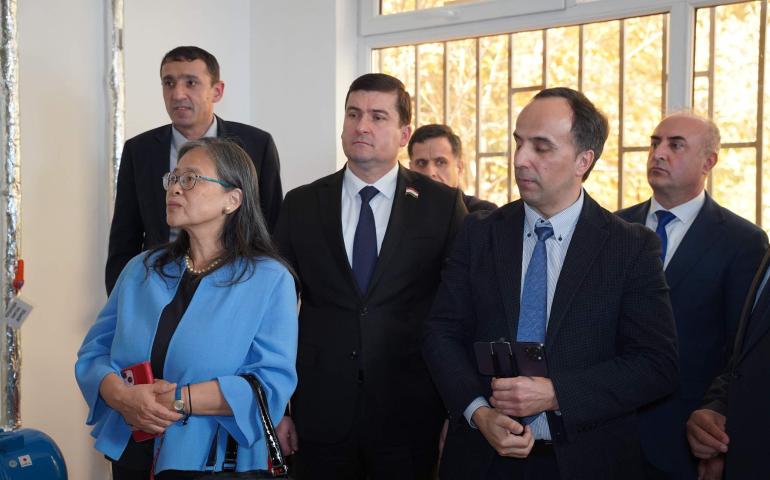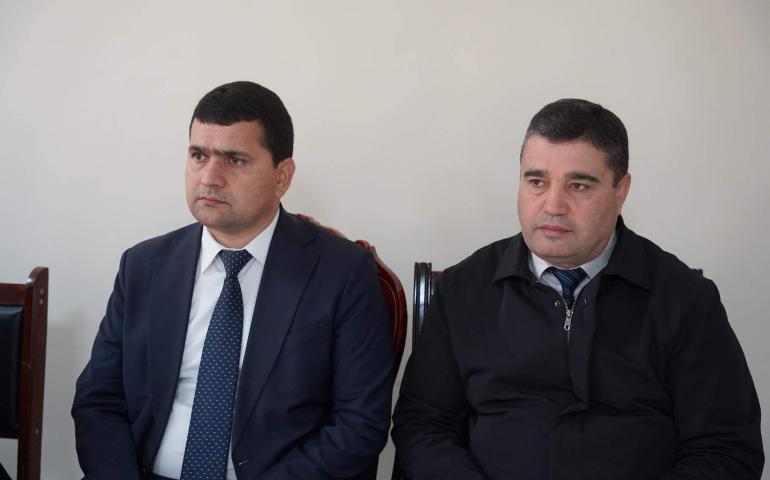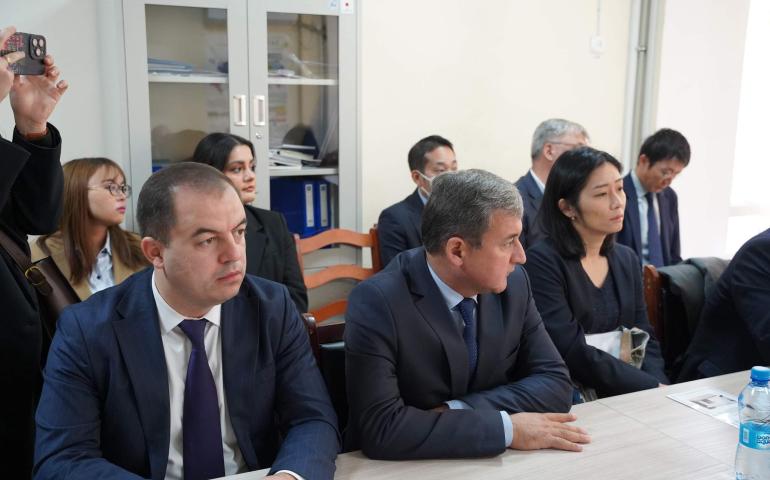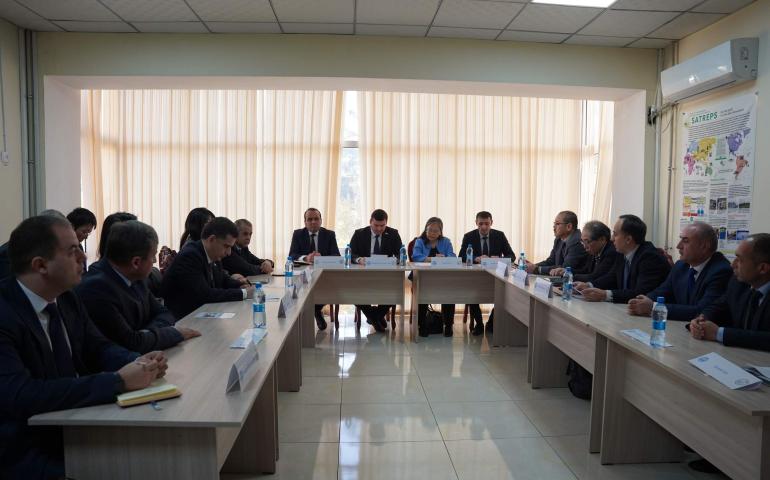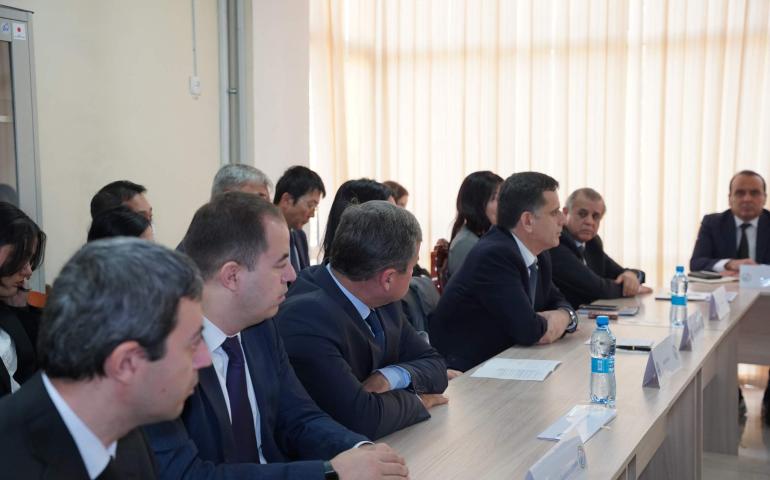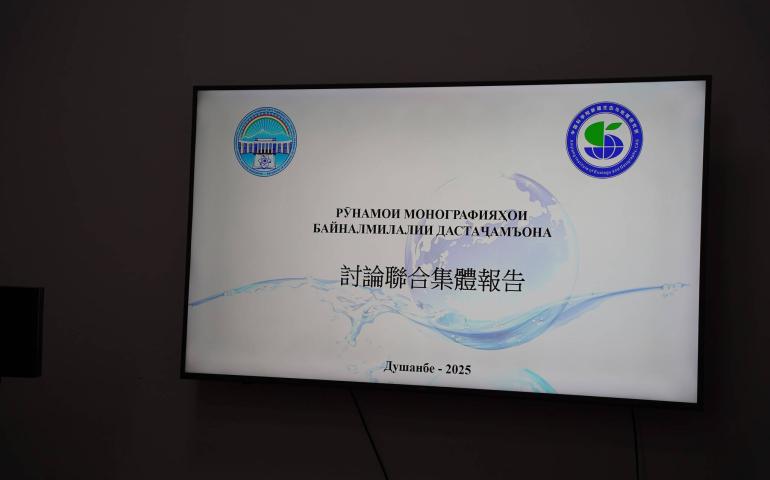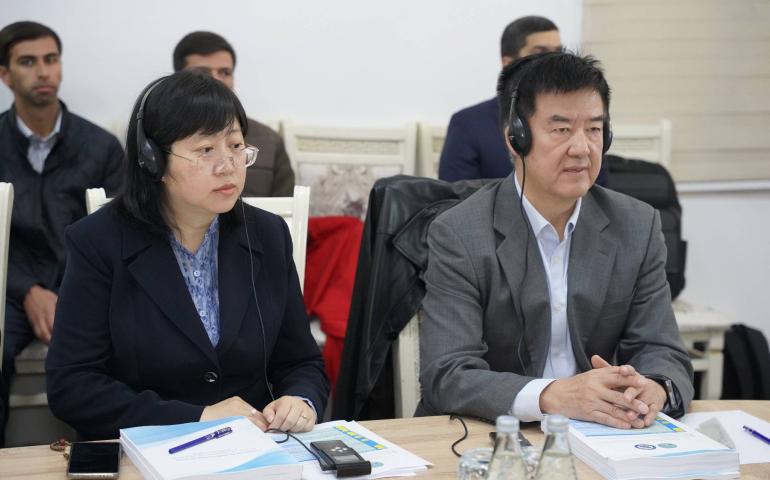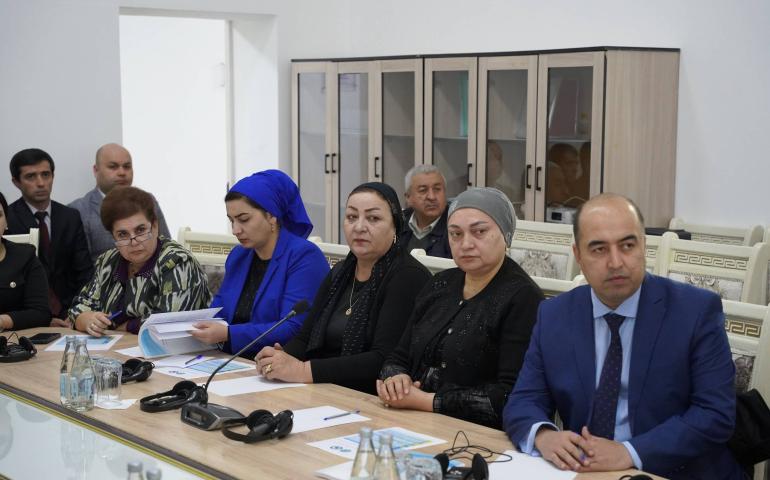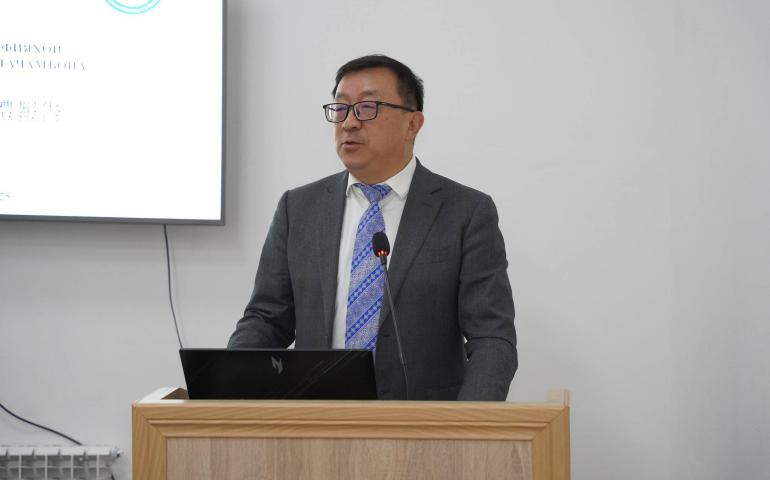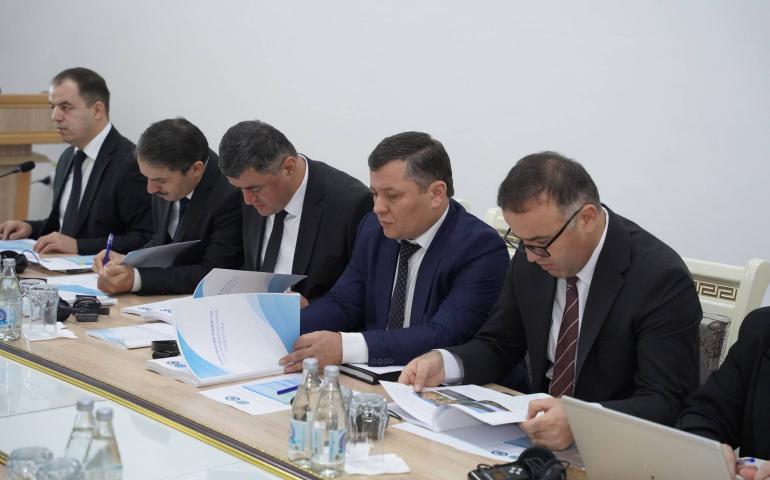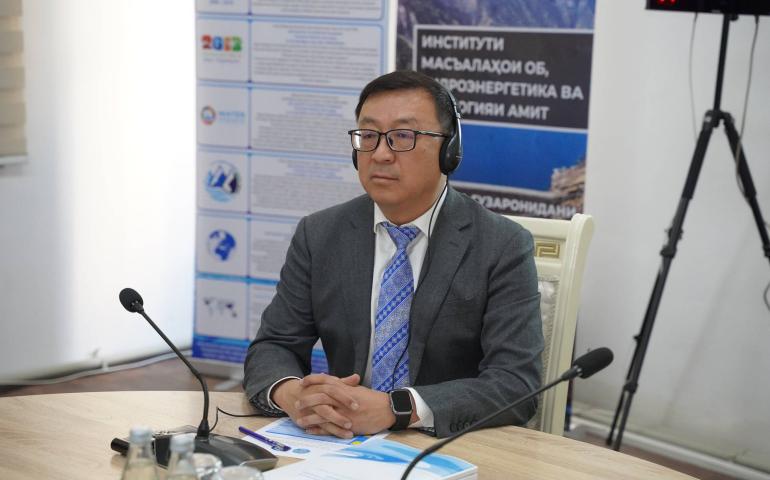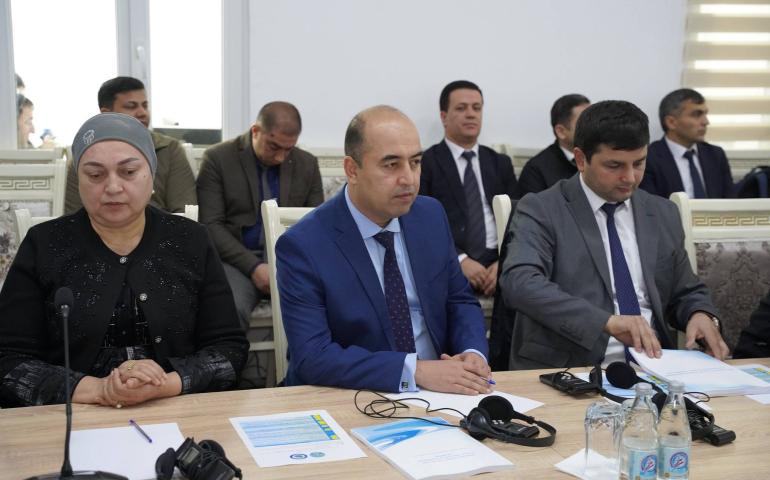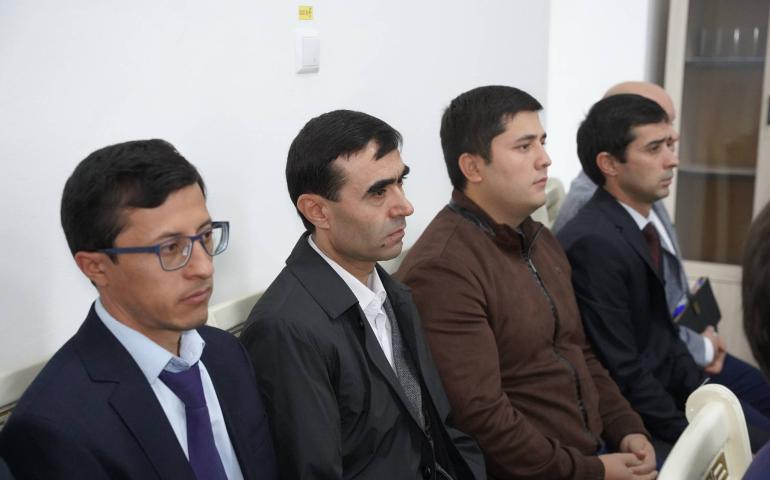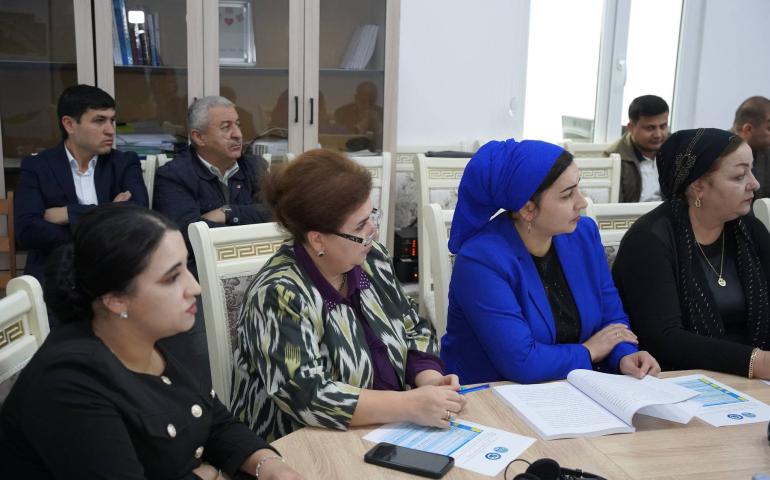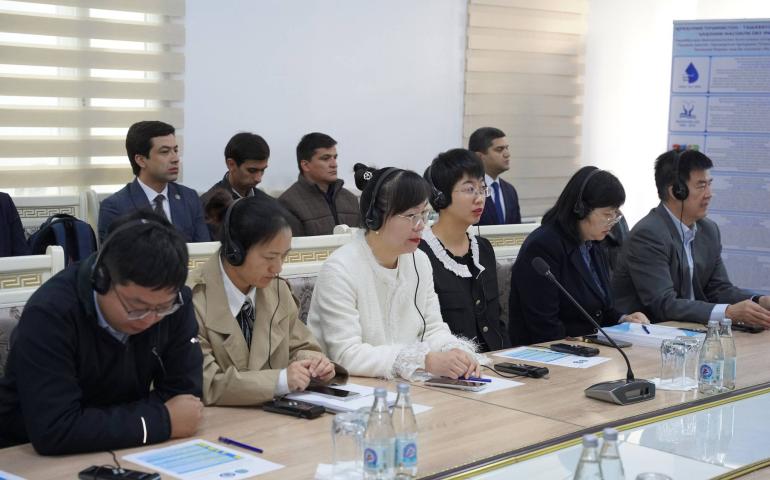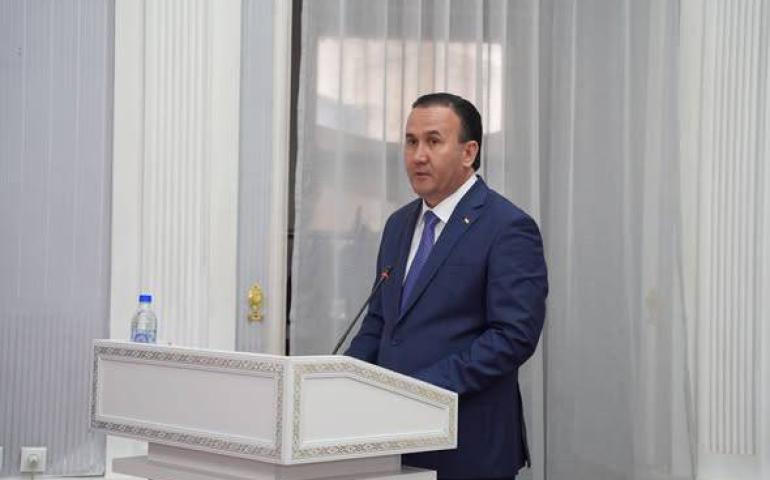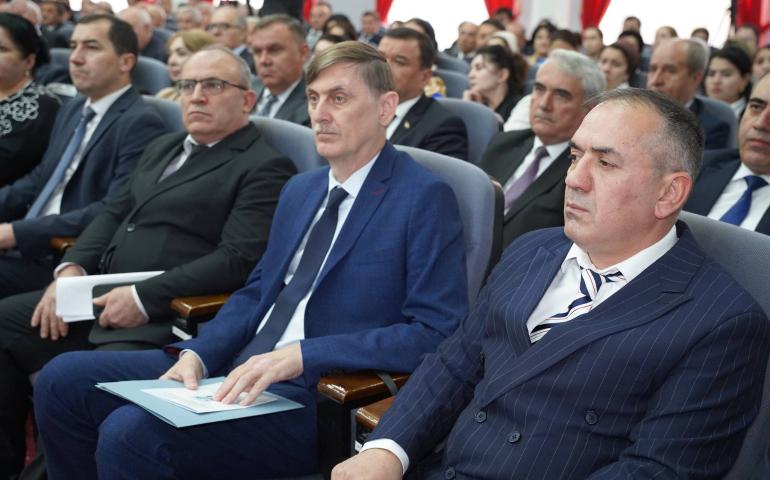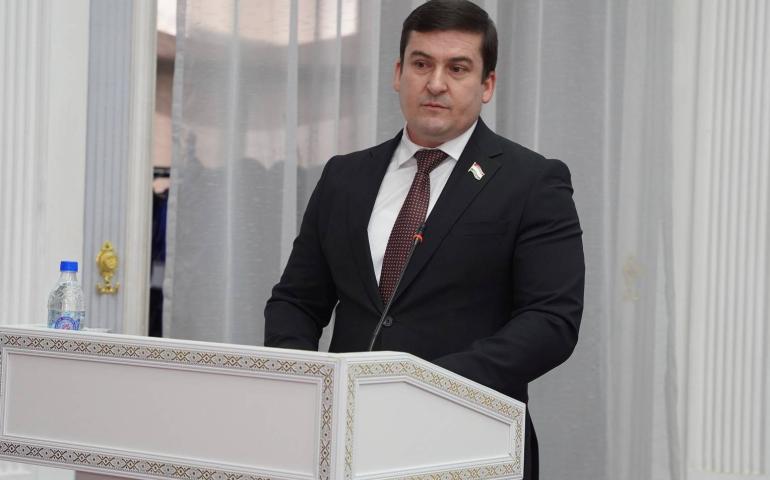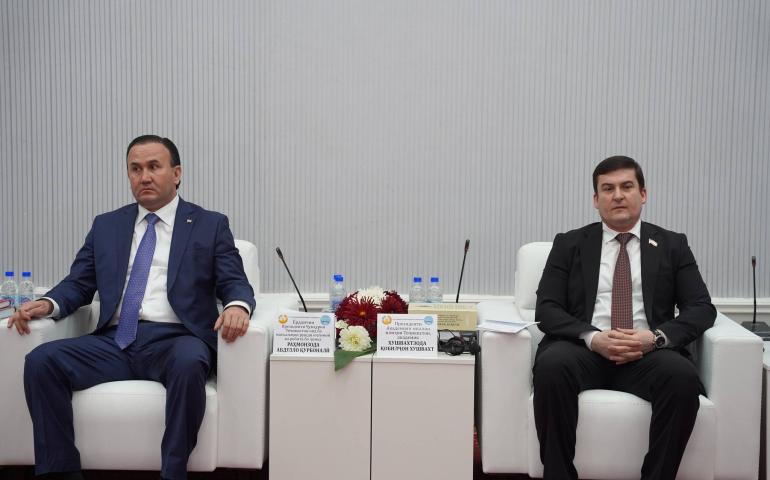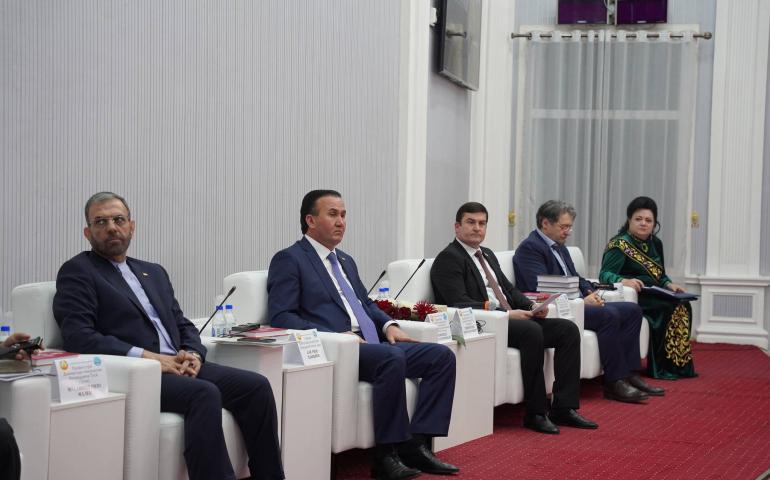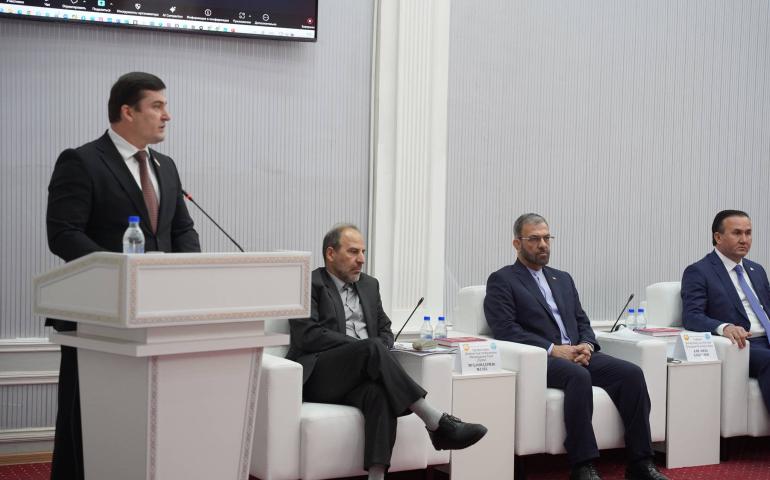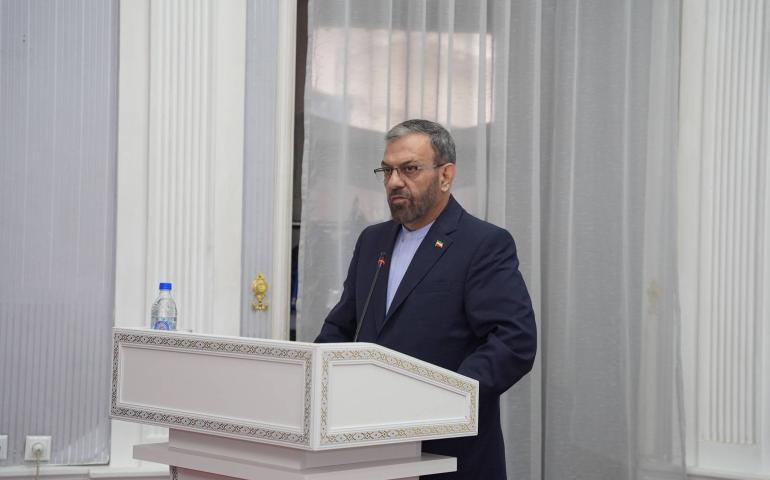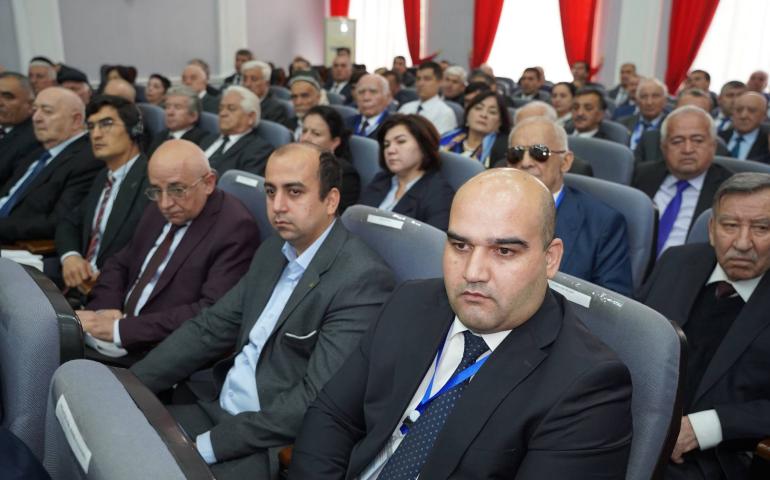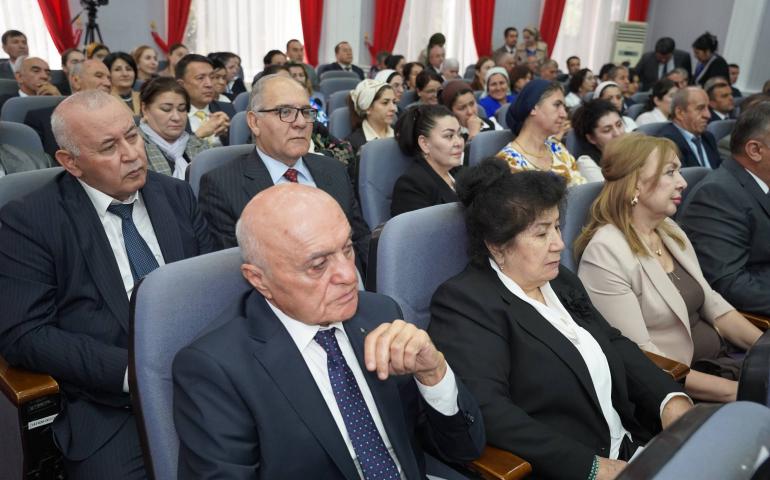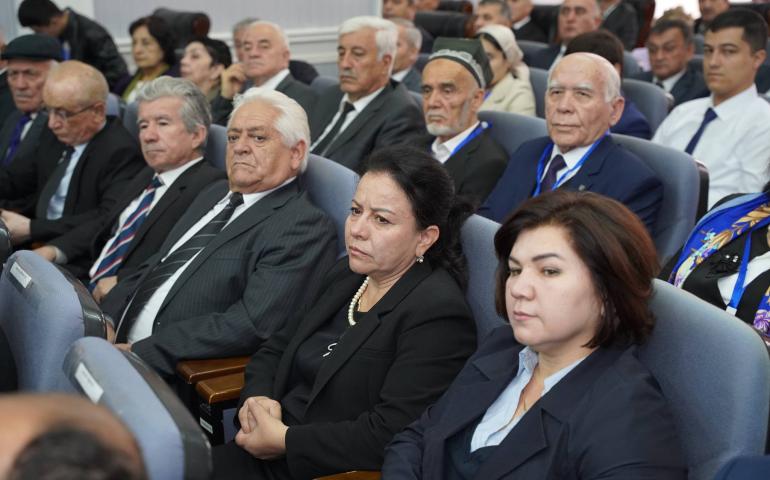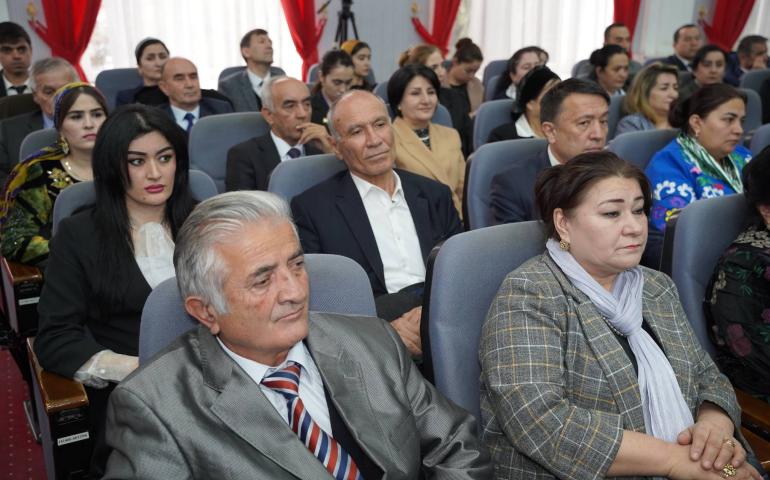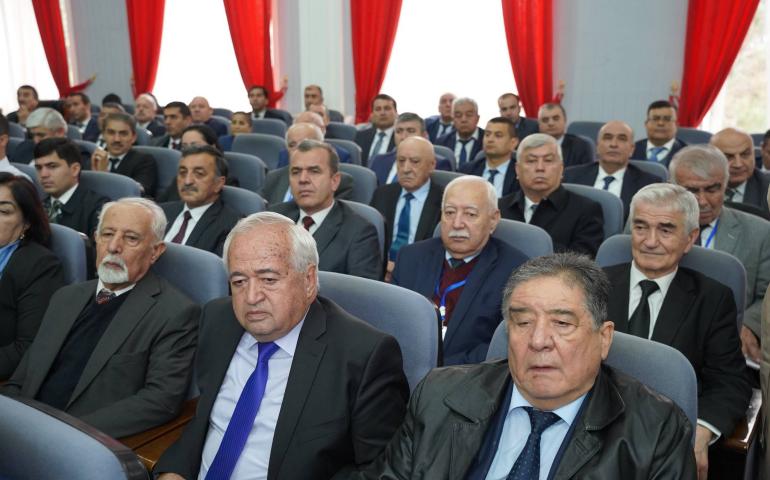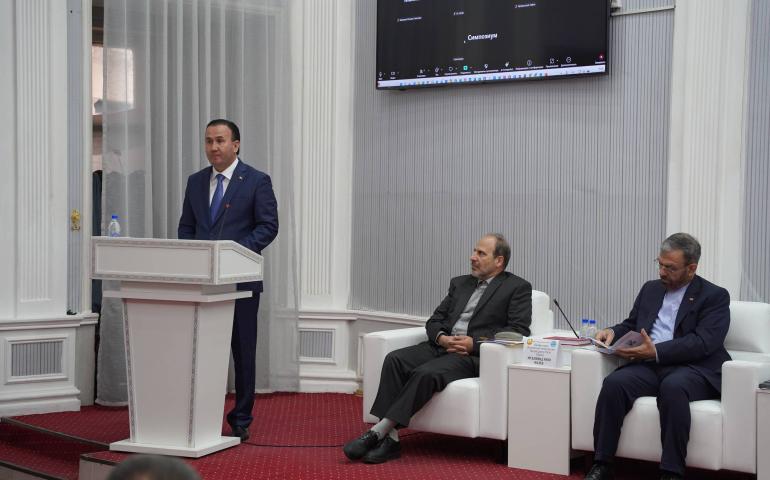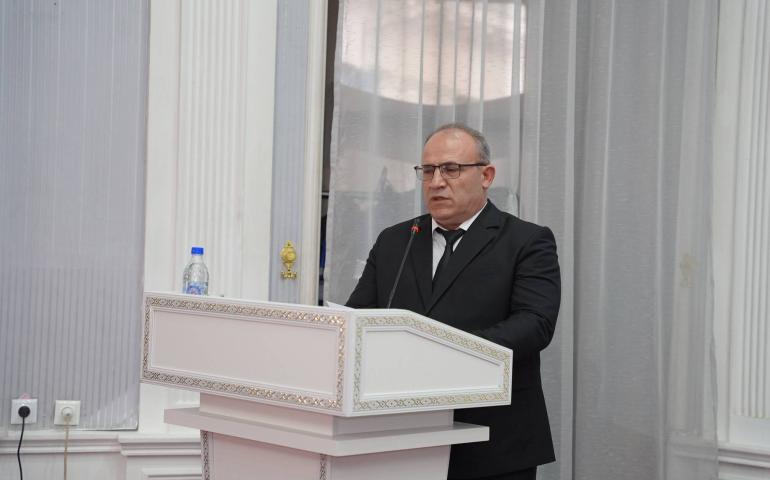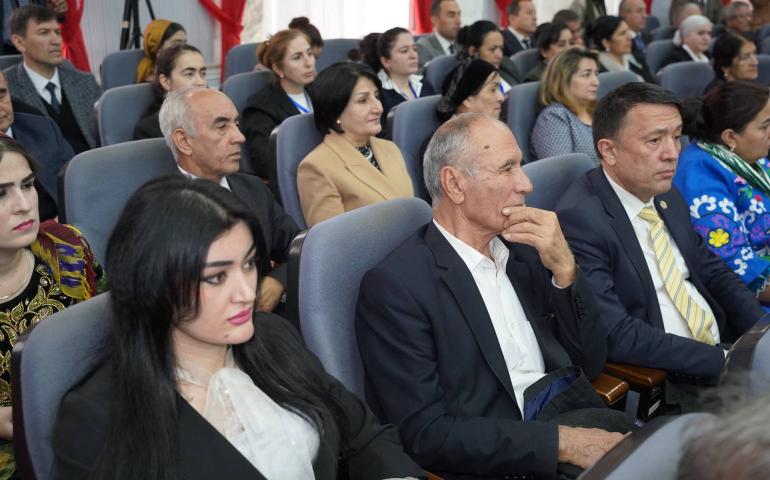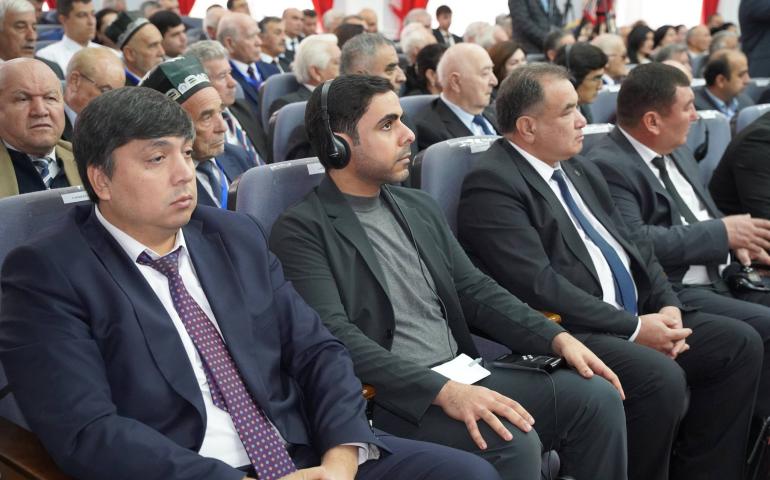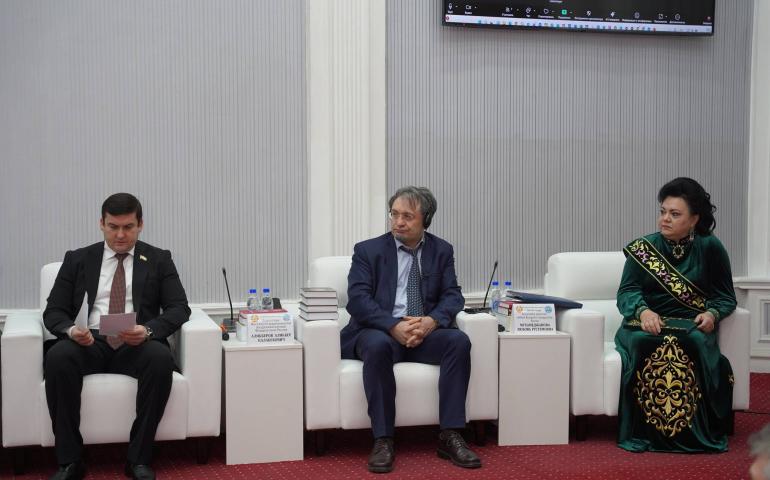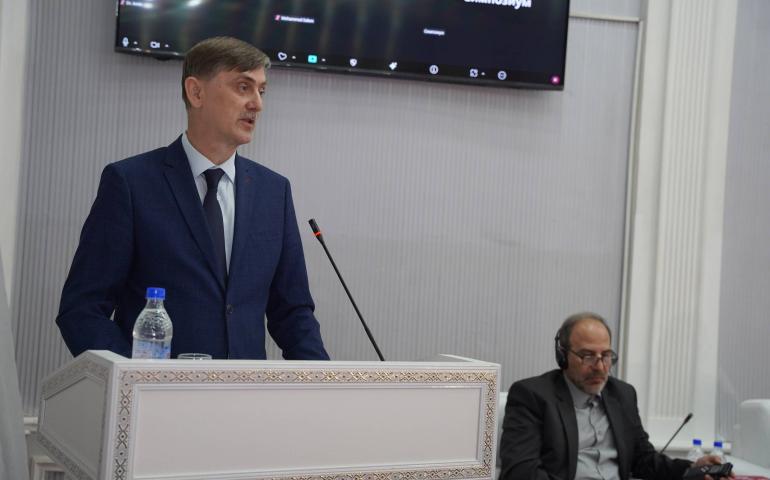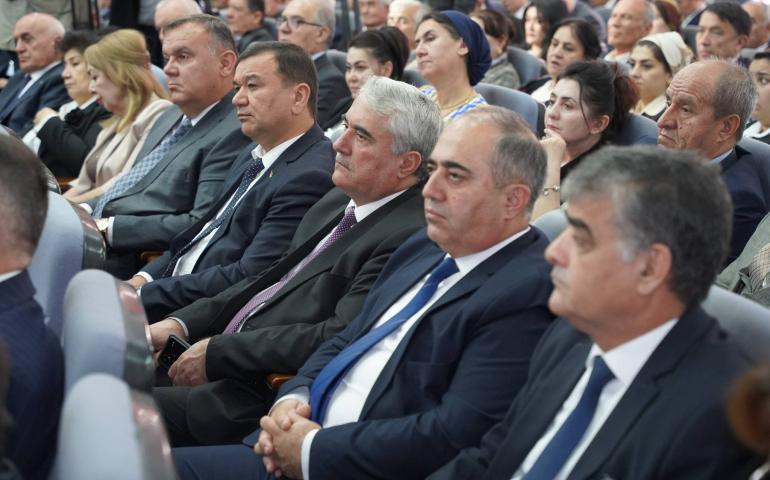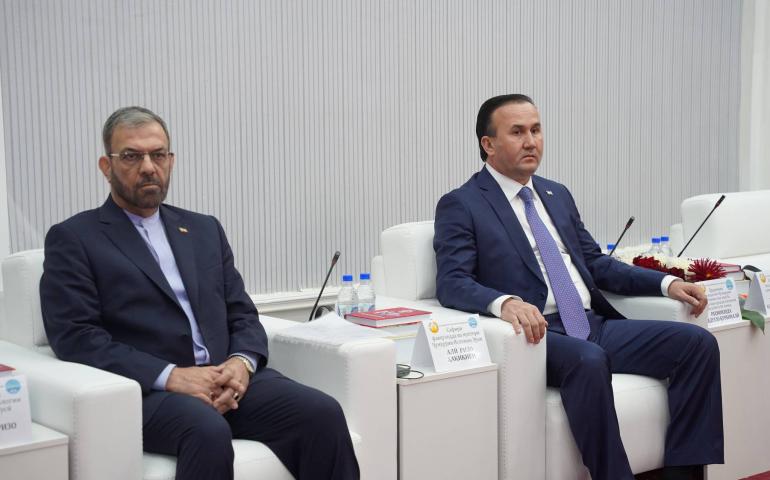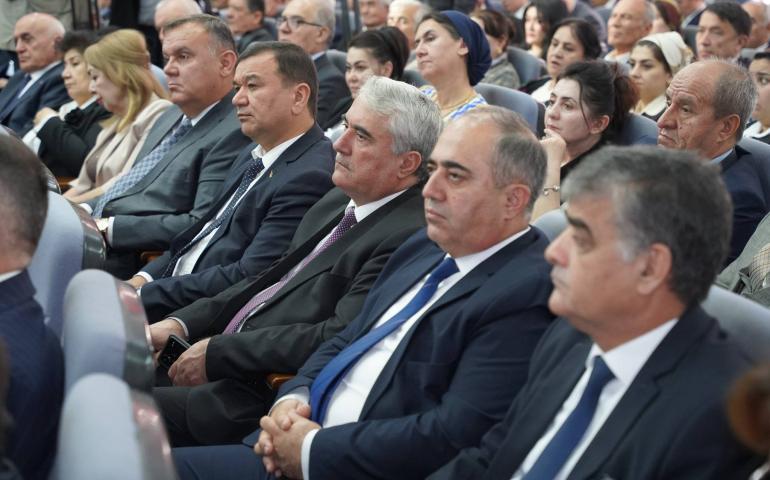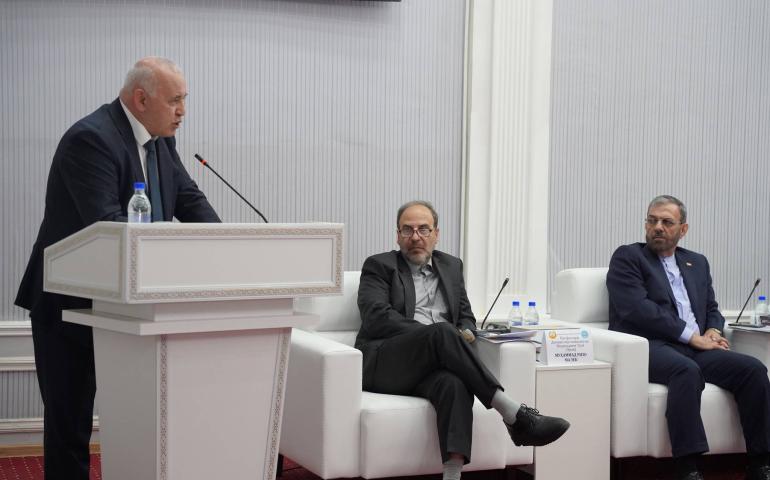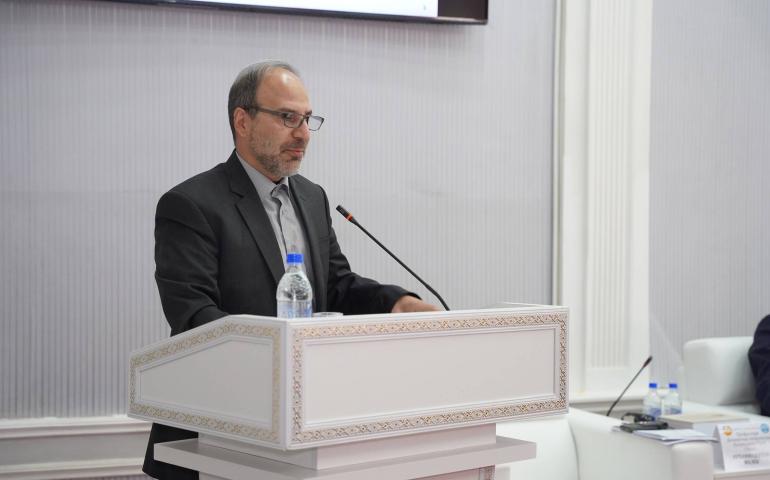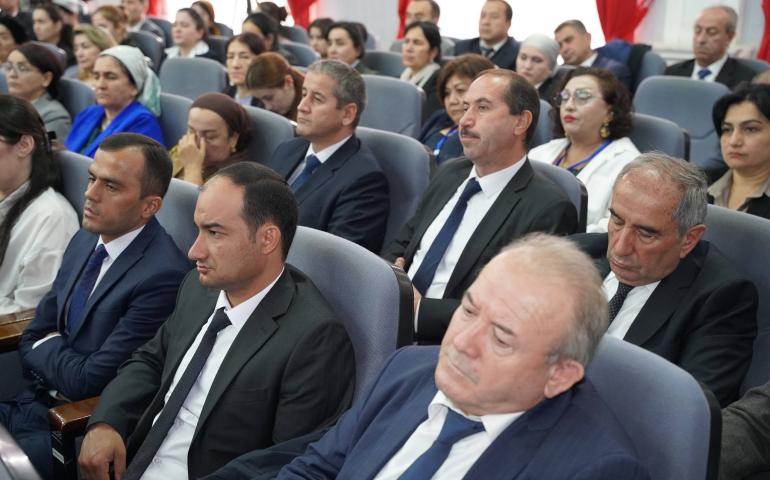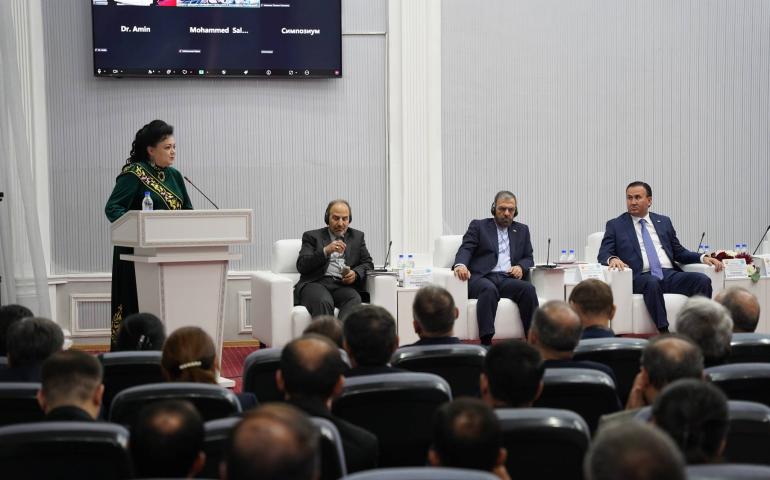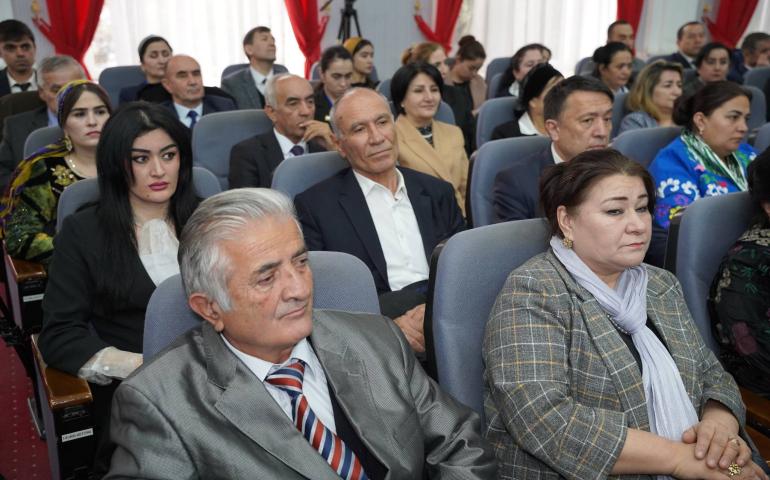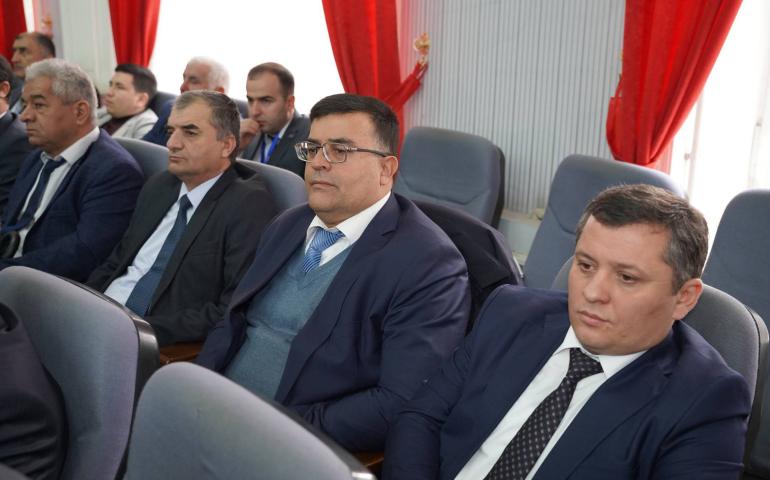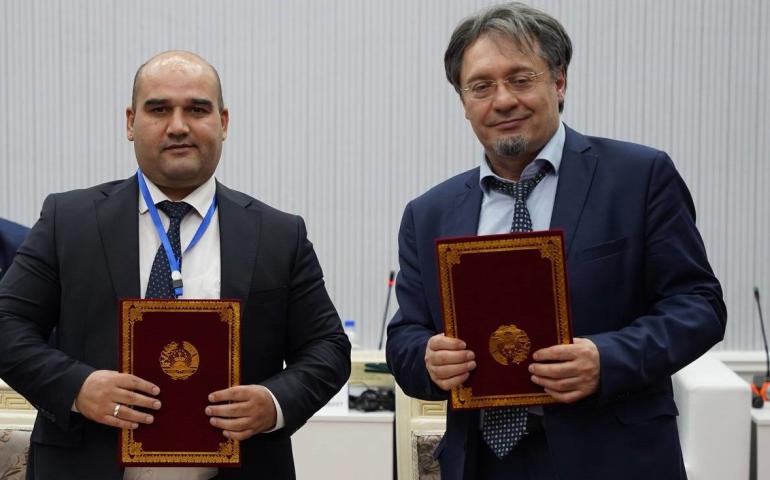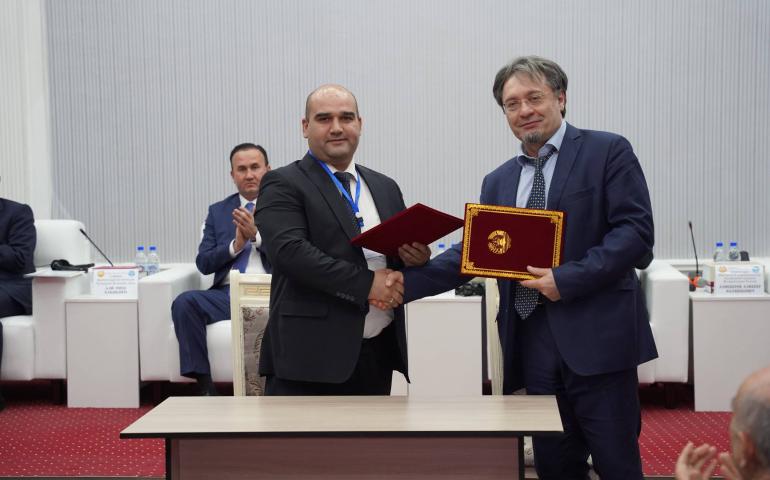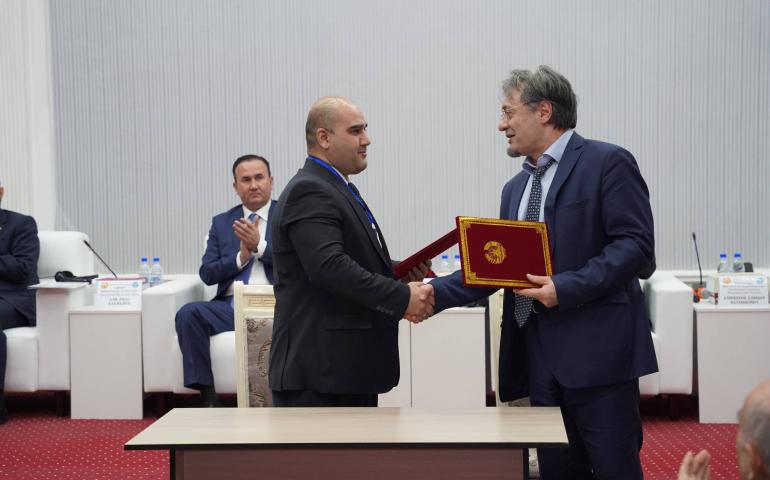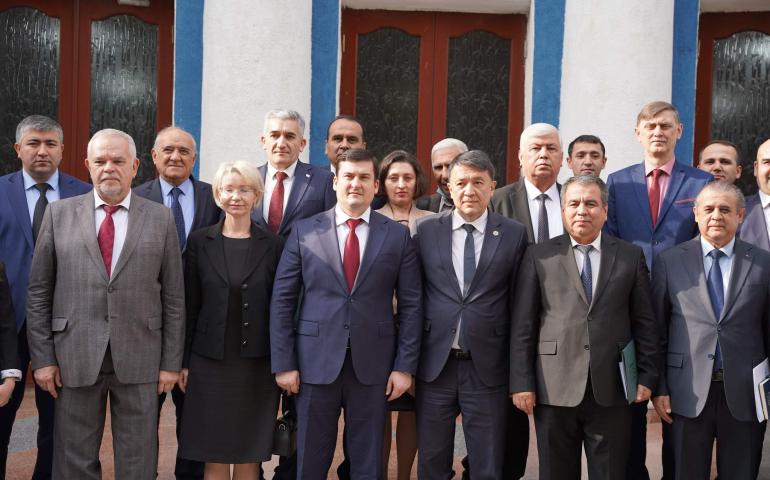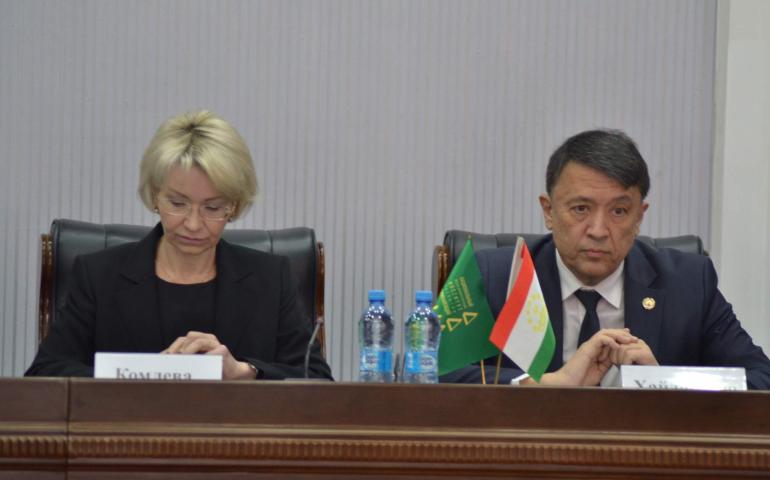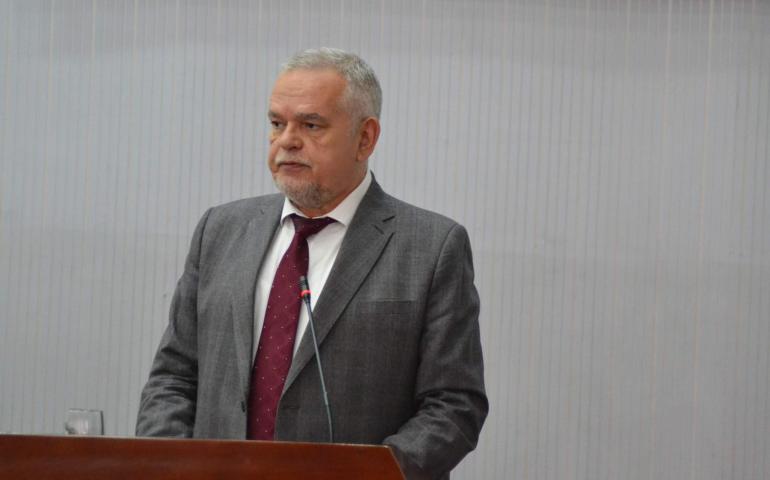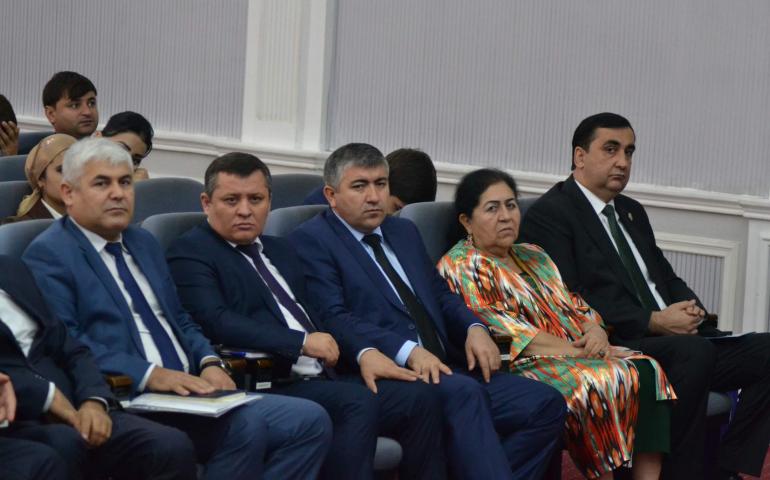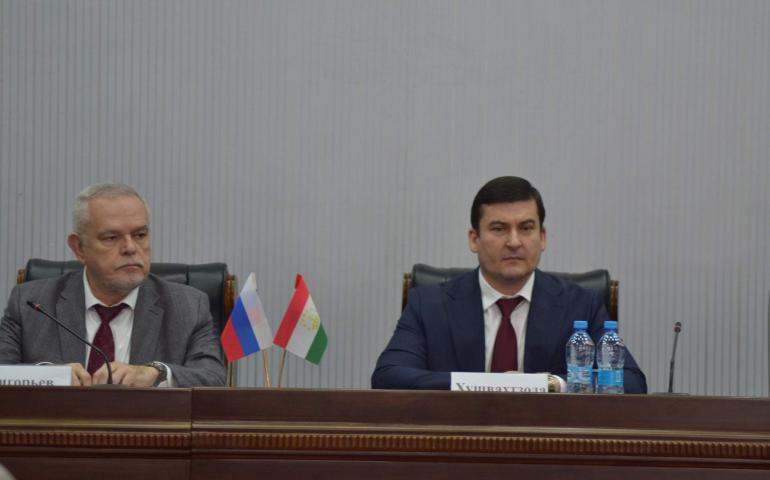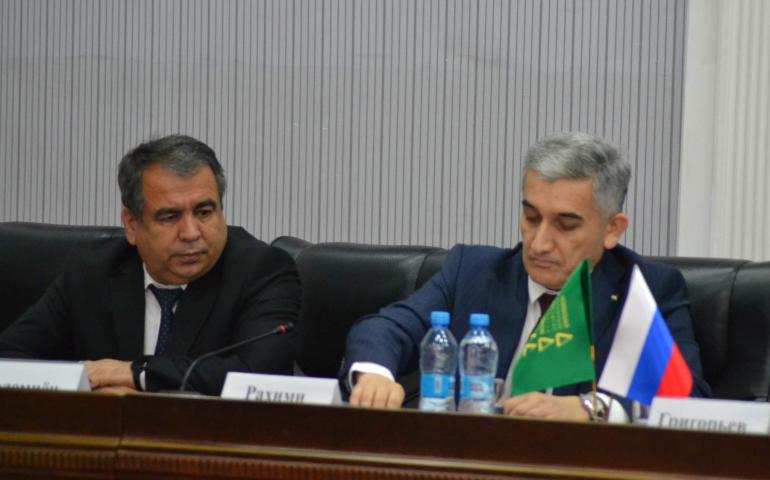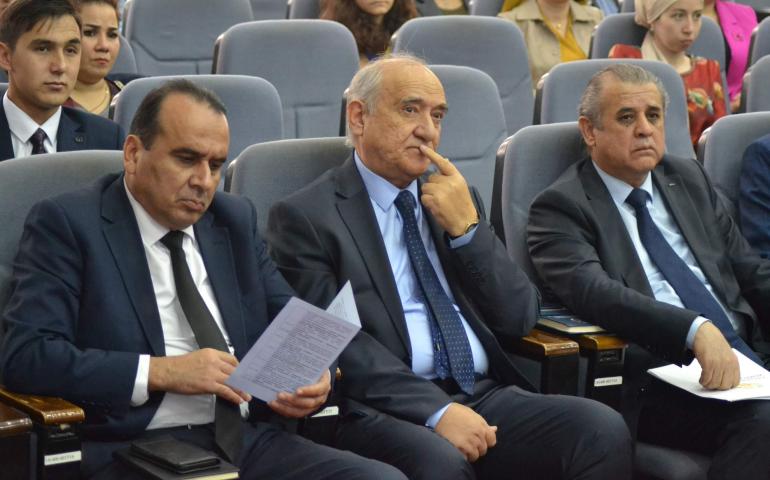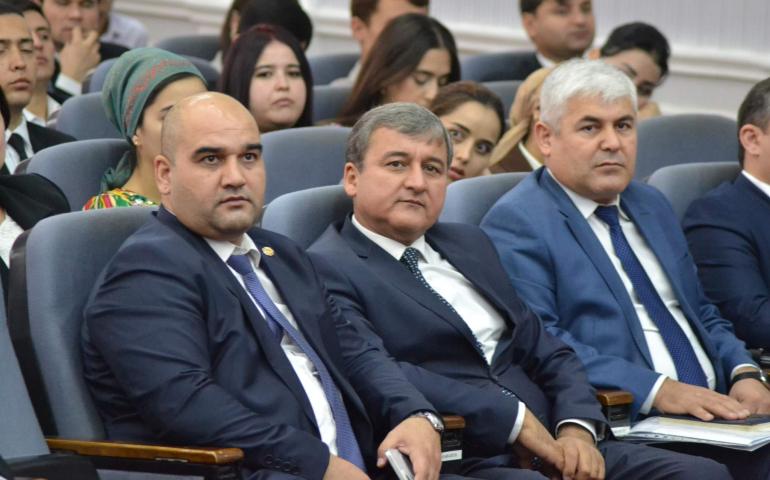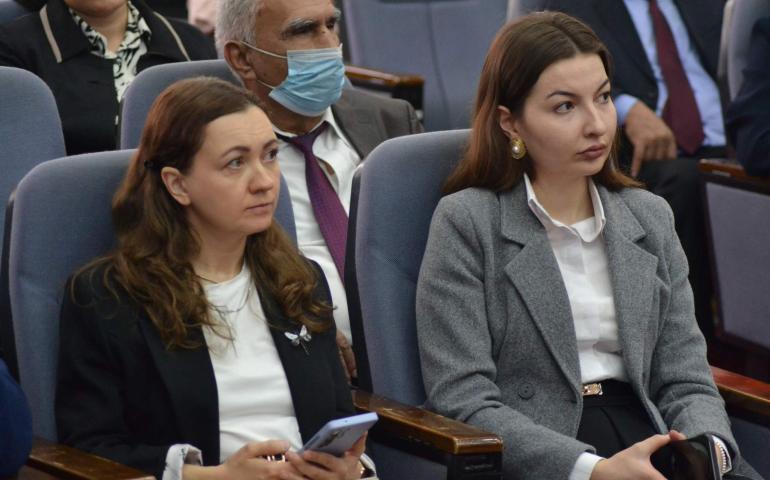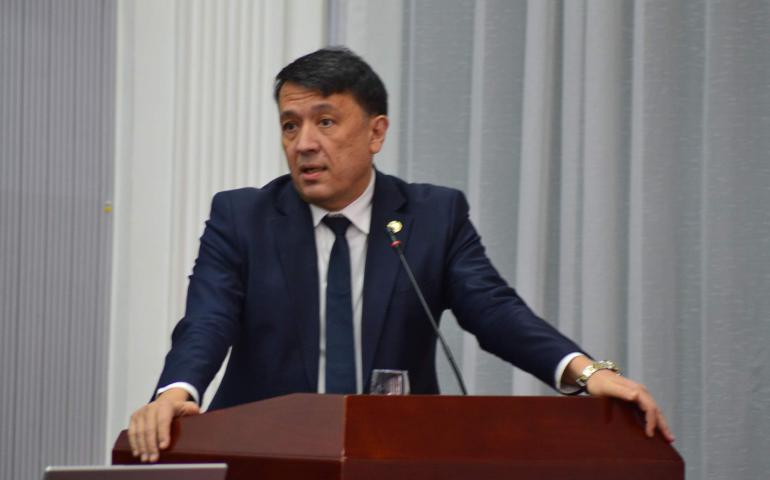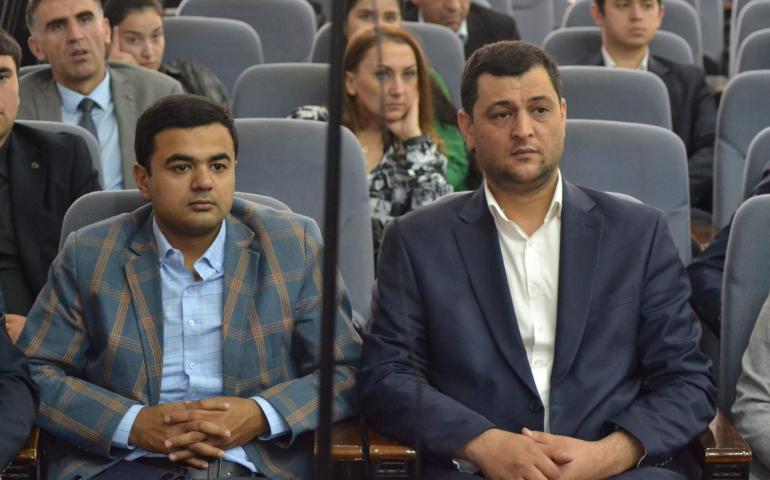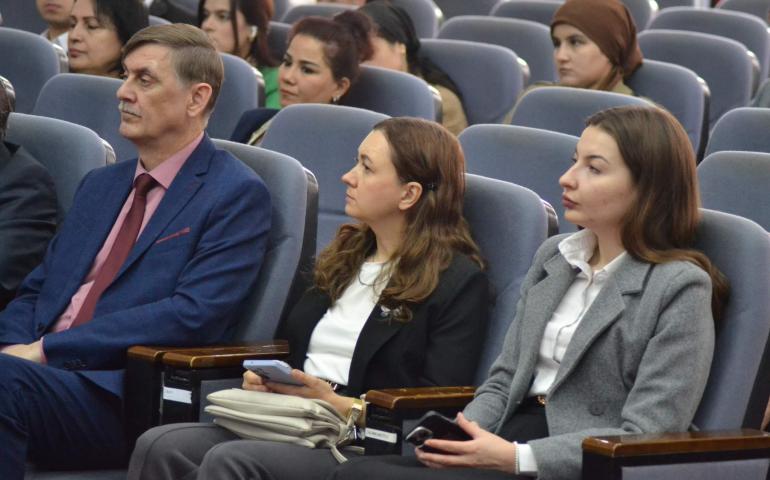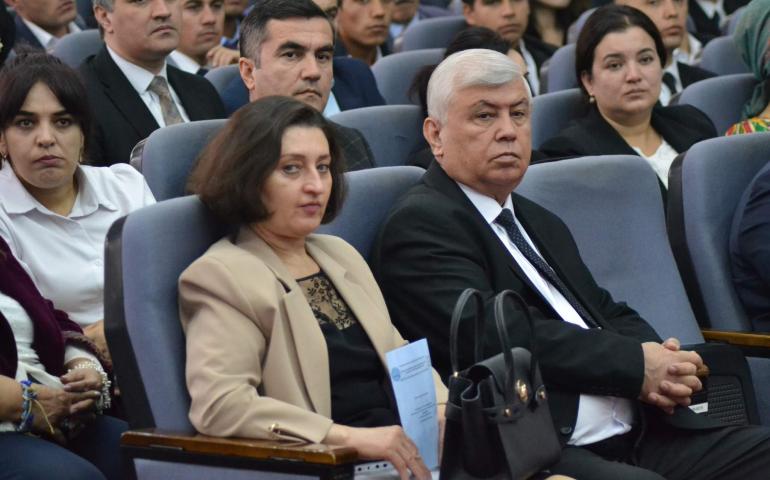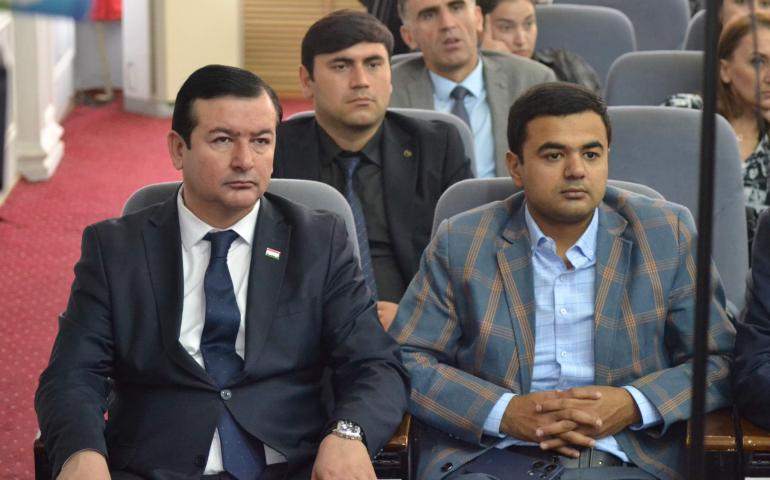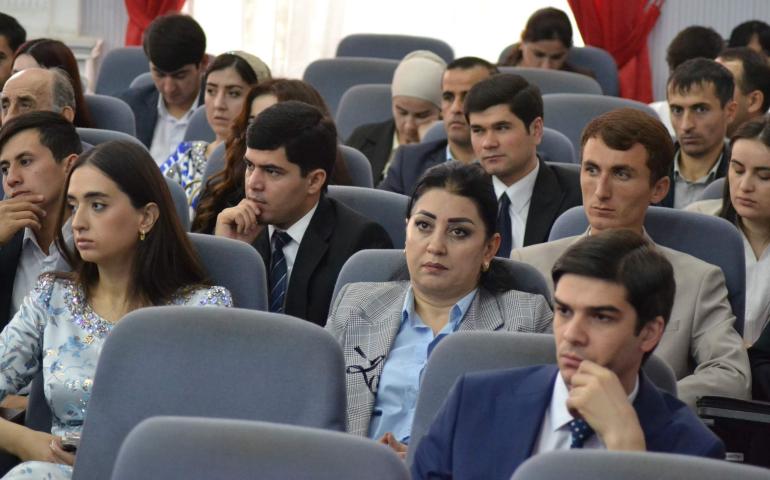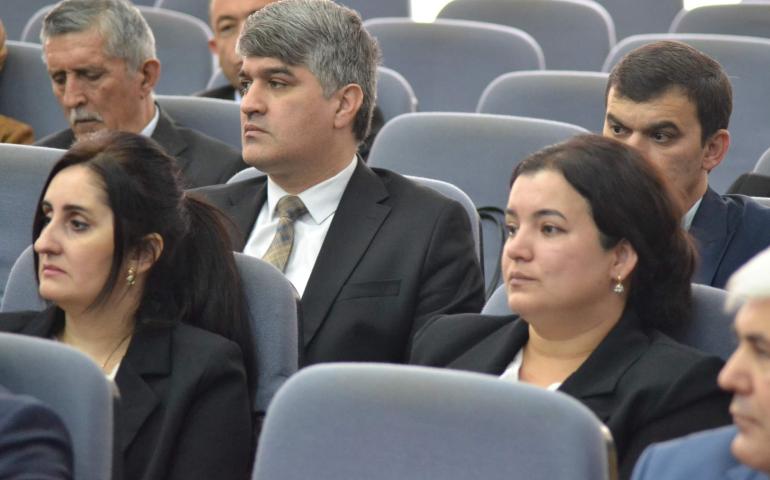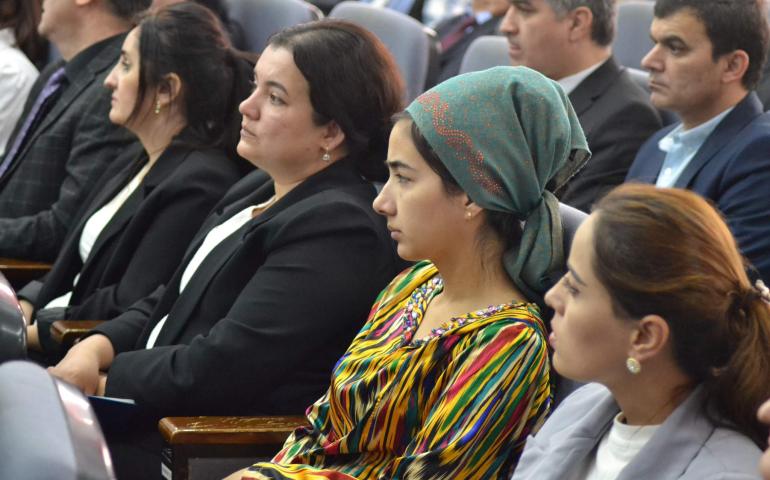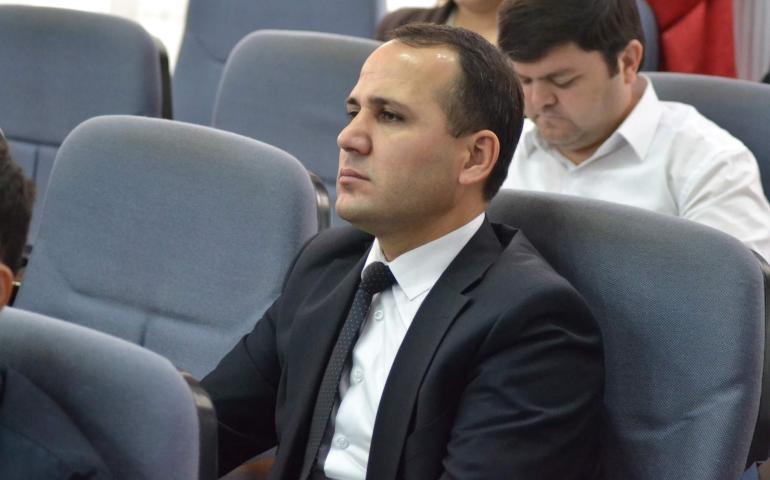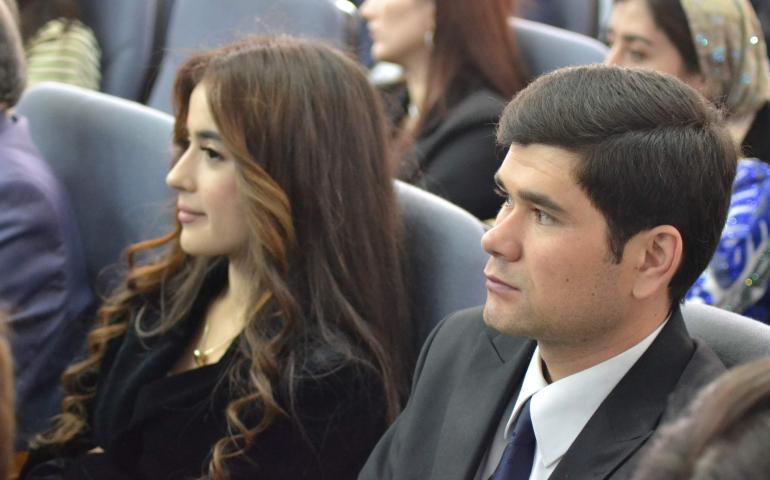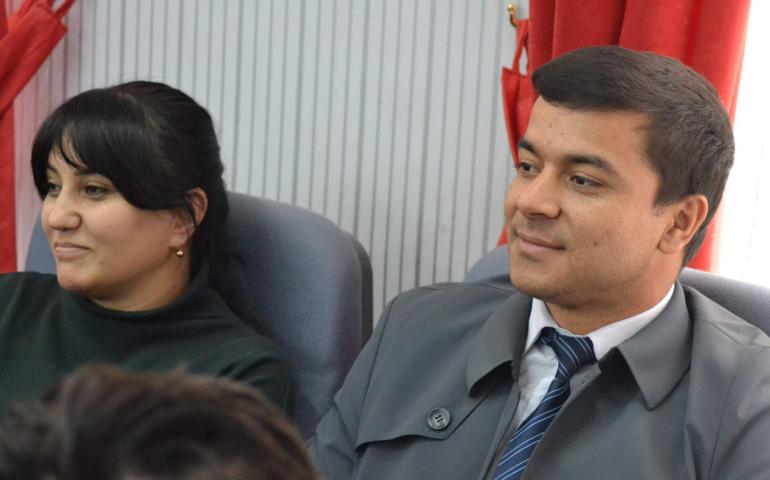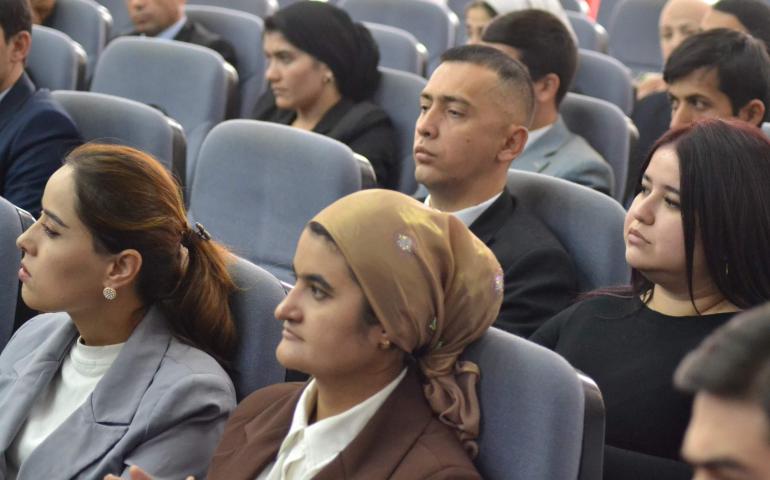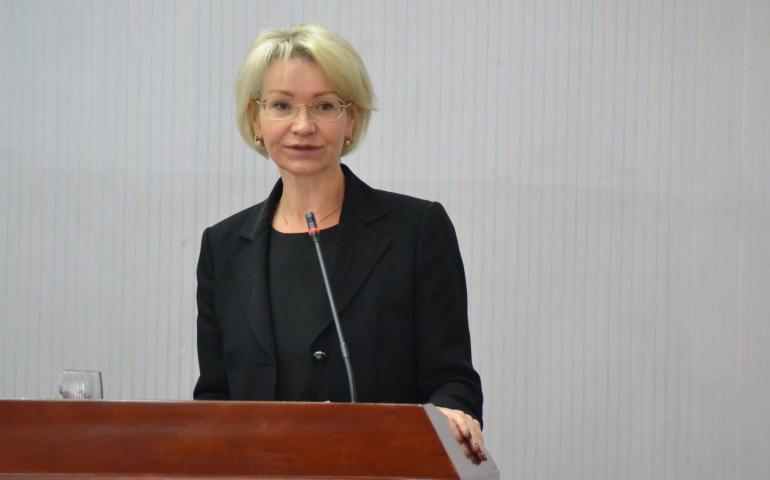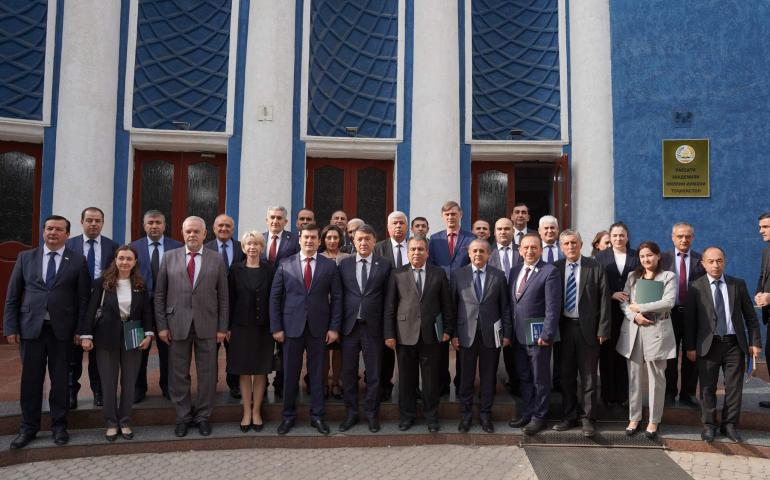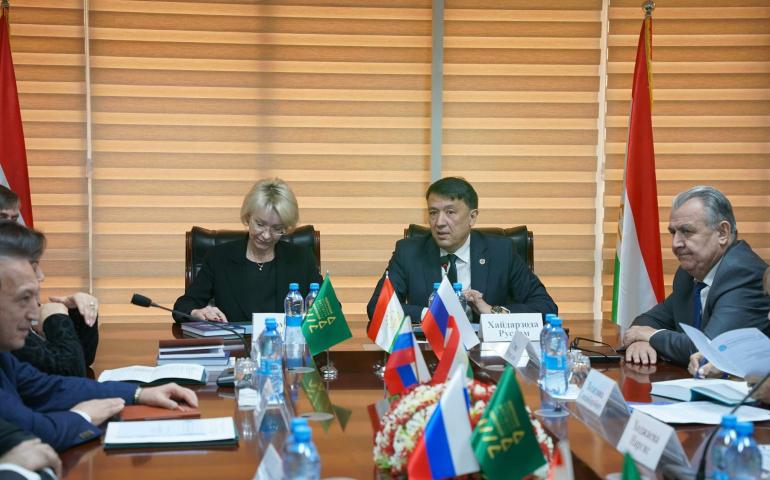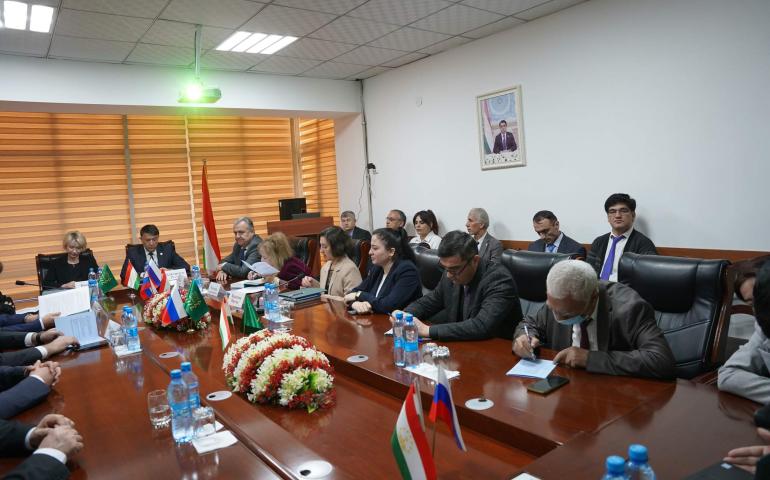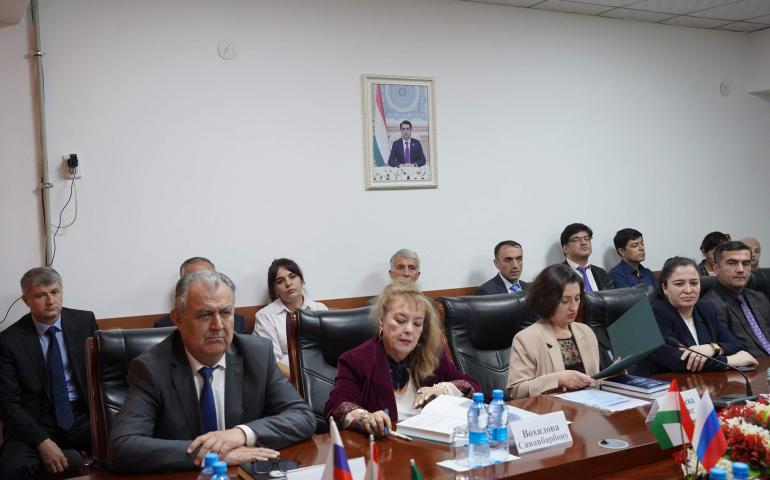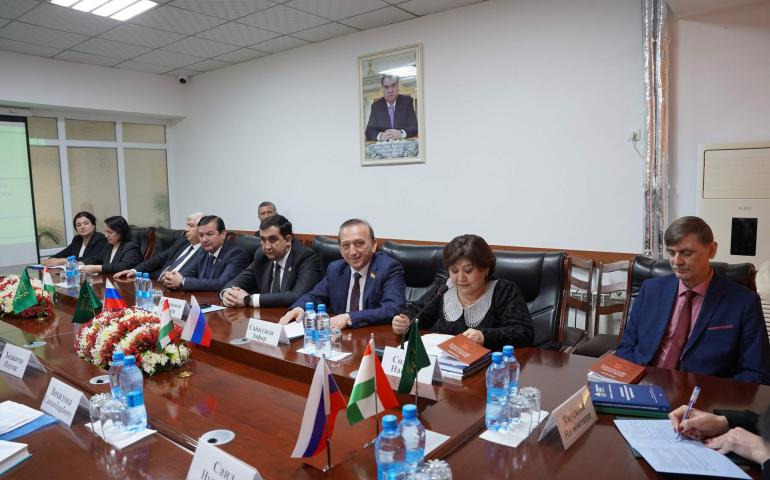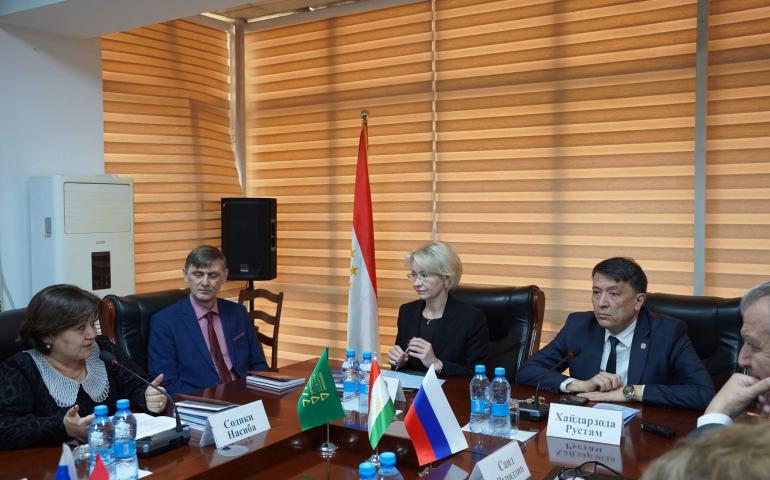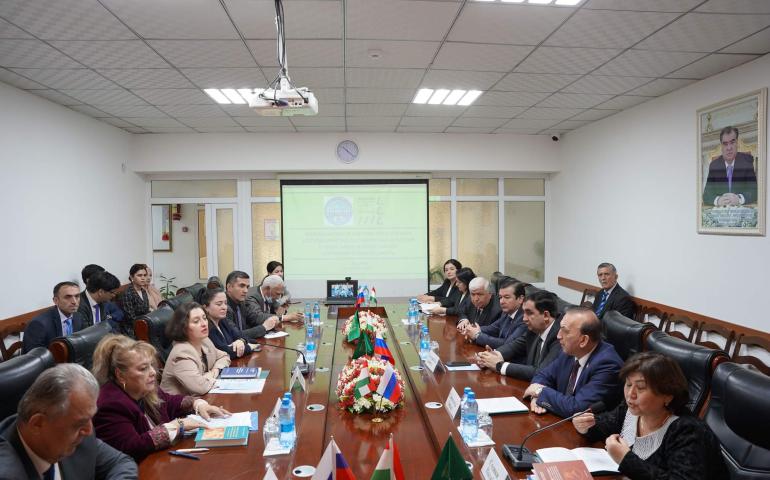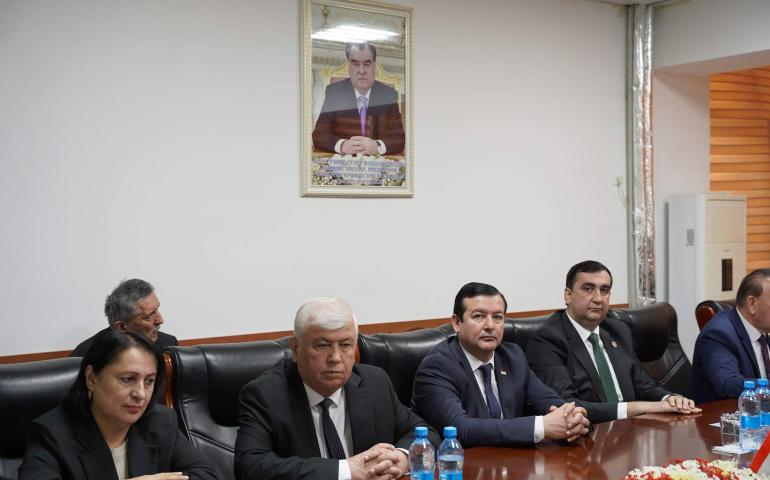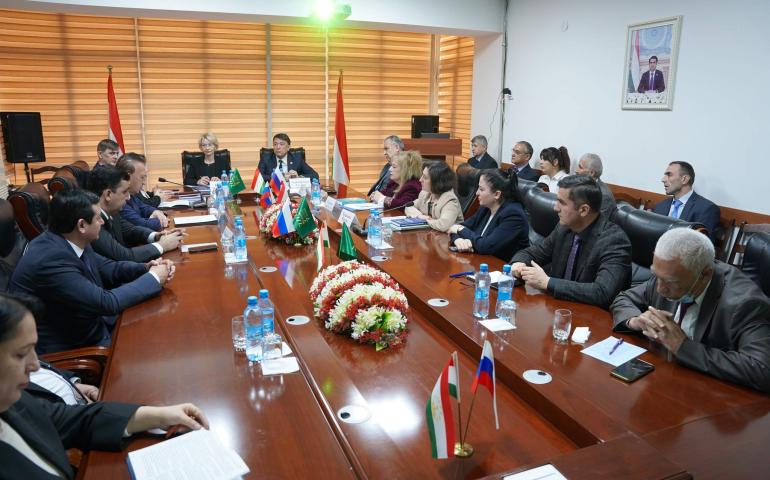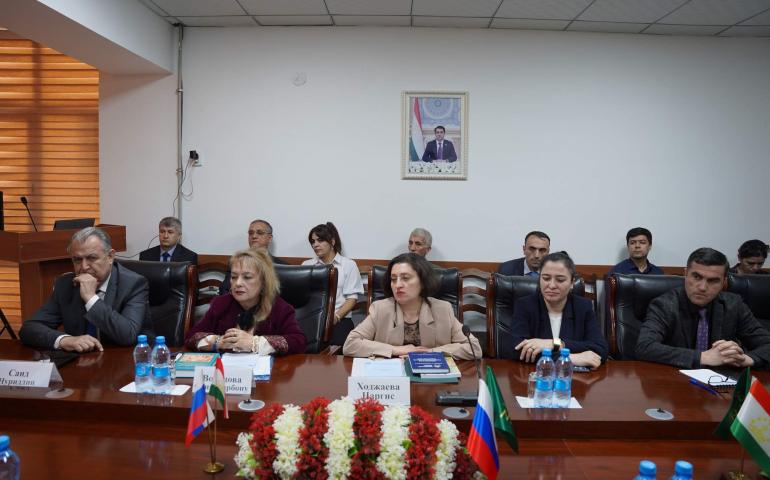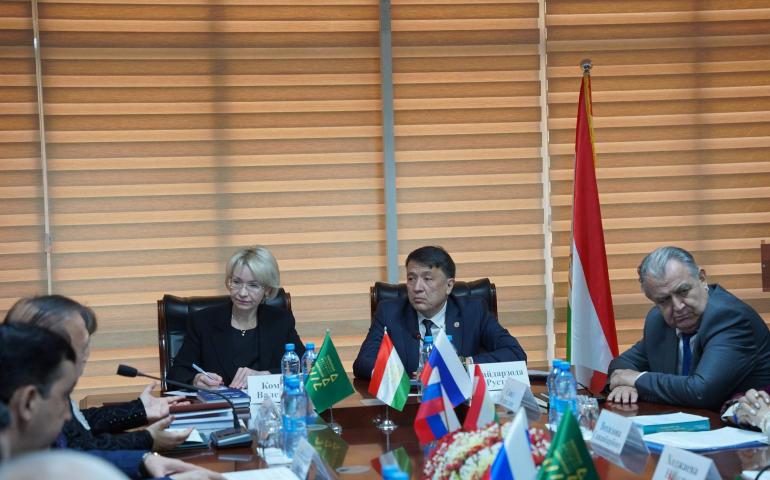
It is undeniable that the history of mankind has been accompanied by wars. It is against this negative background that many states, peoples and civilizations have disappeared, and most wars have caused great destruction and hindered development. In modern times, taking into account the ideological factor, the danger of weapons of mass destruction and the intensity of civilizational, national and religious clashes, the danger of wars can increase manifold, becoming the basis for the disappearance of all the achievements of humanity. It should be noted that at this sensitive and difficult moment for the history of mankind the role of leading figures, uniting the people and the mission of peacemaking increases. In the history of the Tajik people, after centuries of lack of a national state, with the acquisition of independence, under the instigation of foreign forces, the self-interest of some internal groups and against the background of the abominable phenomenon of regionalism, civil war broke out, which could not only cause great destruction and loss, but also become a factor in the destruction of the nation and the disappearance of the Tajik national state from the political map of the world. Fortunately for the Tajik people, at the XVI Session of the Supreme Council of the Republic of Tajikistan, a person came to power who began his work with peace and brought stability and tranquility to the suffering people of the country.
Along with this slogan heralding the good future of the people of the country, Emomali Rahmon began his mission with a direct acquaintance with the conflict zones of the country in the Khatlon region, the situation on the border with Afghanistan. During the continuation of the XVI Session of the Supreme Council of the Republic of Tajikistan, important and unifying decisions were adopted, such as the Law of the Republic of Tajikistan on Amendments and Addenda to the Constitution of the Republic of Tajikistan, the Law of the Republic of Tajikistan “On Refugees”, the laws of the Republic of Tajikistan on approving the Regulations on the Flag and State Emblem, on the structure of the Council of Ministers, on the organization of the Khatlon region, and in the first address to the noble people of Tajikistan, the return of refugees, the establishment of peace, and ensuring the stable development of the country were identified as strategic goals.
The documents adopted at the session allowed the Head of State, Emomali Rahmon, to lead the country towards stability, strengthening of power, statehood and national independence, and to encourage the people to be creative and constructive.
The Head of State, as the guarantor of the security and peace of the country, invited all compatriots who had been forced to flee to their places of residence. In 1993-1994, most of the refugees returned to their homeland, giving new impetus to the process of creation and construction in pursuit of the prosperity of the country.
During the civil war in 1992, more than 1 million residents of the country were forced to leave their places of residence. The contribution of the Radio and Television Committee, the Mass Media, and especially the radio program “The Land of the Homeland is Better than the Throne of Solomon” is very significant.
In general, from the first days, the two fundamental values of the survival of the nation - peace and the preservation of independence - became the basis of Emomali Rahmon's activities, and became the basis for the beginning of the peace negotiations process of the Tajiks, overcoming the difficult stages of peacemaking (stability in the issue of achieving peace, unparalleled courage and self-sacrifice, unique concessions and forgiveness), establishing peace, national unity and developing a new statehood of Tajikistan.
It should be emphasized that one of the conditions for achieving peace in the country is the public's trust in the honorable Emomali Rahmon, the support of civil society, intellectuals and activists. This is reflected in the organization of the Movement for National Unity and Revival of Tajikistan in 1996. On the other hand, political parties gradually united around the idea of peace as a factor in the survival of the nation, and party dialogue was organized on this issue.
One of the main factors for establishing peace is the formation of mechanisms for implementing decisions made in the negotiation process - the National Reconciliation Commission. It was with the foresight and concession of the Leader of the Nation that the National Reconciliation Commission was established, inclusive of both sides, the government and the opposition, and it played an effective role in the disarmament of armed groups, so-called self-defense groups, and the integration of militants into government forces.
The experience and practice of the Tajik peace process, with its national and global significance in returning more than 1 million forced refugees to their places of residence and organizing their social integration, was realistically recognized and evaluated by the United Nations and the Organization for Security and Cooperation in Europe as the most unique model of peacemaking. In recognition of these sacrifices, the Presidency of the 54th Session of the UN General Assembly was entrusted to the Leader of the Nation, His Excellency Emomali Rahmon. Moreover, the Tajik peace formula was studied in all international research institutes and centers for the study of national conflicts.
Domestically, the President of the Republic of Tajikistan, in recognition of his great and fateful efforts and services in protecting, restoring, and strengthening state independence, was recognized in 2015 by law and in 2016 by constitutional law as the "Founder of Peace and National Unity - Leader of the Nation."
Nowadays Tajikistan is known all over the world as an initiator country in the sphere of solution of global problems – clean water, climate changes, preservation of glaciers and other topical issues in the world.
Long live Tajikistan,
Long live my motherland!
A. Najmiddinov c.ph.s., docent, Senior Researcher of the Department of the USA and Canada of the Institute of Asia and Europe of NASRT
Today, on December 1, the President of the National Academy of Sciences of Tajikistan, Academician Khushvakhtzoda Qobiljon Khushvakht, held a meeting with the Head of the Regional Programme for Central Asia, Andre Algermissen, and the Project Coordinator for Central Asia, Ashraf Alikulov.
During the meeting, the parties exchanged views on strengthening scientific cooperation within the framework of the Regional Programme for Central Asia and emphasized the need to develop effective coordination mechanisms between scientific institutions of the region and international organizations. It was noted that scientific cooperation and the use of the intellectual potential of Central Asian countries are among the key factors in ensuring sustainable regional development.
The President of the National Academy of Sciences of Tajikistan, Academician Khushvakhtzoda Qobiljon Khushvakht, stressed that the National Academy of Sciences of Tajikistan is ready to enhance cooperation in priority scientific areas, including natural sciences, energy, ecology, information technologies, and climate change studies. It was noted that the implementation of joint projects would contribute to strengthening scientific capacity, attracting qualified specialists, and developing the country’s scientific infrastructure.
Further, the Head of the Regional Programme, Andre Algermissen, expressed satisfaction with cooperation with the Republic of Tajikistan and emphasized that within its mandate, the Programme is ready to provide comprehensive support for new scientific and innovative initiatives, the organization of training programmes, human capacity development, and the expansion of regional scientific networks. It was also noted that effective scientific ties can have a positive impact on strengthening regional stability and security, as well as on improving natural resource management mechanisms.
At the conclusion of the meeting, the parties underscored the importance of developing science diplomacy and expressed their readiness to elaborate specific cooperation plans, hold joint conferences and seminars, and expand relations with international organizations.
VISIT OF THE PRESIDENT OF THE ACADEMY OF SCIENCES TO THE GREENHOUSE FOR GROWING LEMONS AND OTHER SUBTROPICAL FRUITS AT THE EXPERIMENTAL FIELDS OF THE INSTITUTE OF BOTANY
Today, on 25 November, the President of the National Academy of Sciences of Tajikistan, Academician Khushvakhtzoda Qobiljon Khushvakht, visited the greenhouse for growing lemons and other subtropical fruits on the experimental fields of the Institute of Botany, Physiology and Plant Genetics of the National Academy of Sciences of Tajikistan.
It was reported that on the experimental plots of the Institute of Botany, Physiology and Plant Genetics, considering the establishment of a collection orchard of subtropical plants, a mother orchard and the future expansion of nurseries of mandarin and orange varieties, research experiments are being conducted on seedlings propagated by cuttings — Meyer lemon, ponderosa, grapefruit, lime, avocado, mango, feijoa, chayote (Mexican cucumber), passion fruit, momordica, papaya (melon tree) and olive. The purpose of these studies is to increase the productivity of these crops and develop scientifically based recommendations for their introduction into production.
It was emphasized that in the experimental zone, in order to study the productivity of dwarf apple trees in intensive orchards, apple trees grafted on dwarf rootstocks have been planted, and phenological observations and scientific research are being carried out. Various kiwi varieties have also been planted in the experimental area to establish kiwi cultivation in the future under the climatic conditions of Tajikistan; methods of cultivation and propagation are being studied.
During the visit, it was noted that citrus plants represent a large group of evergreen fruit trees belonging to the genus Citrus, which is part of the subfamily Aurantioideae of the family Rutaceae. In Tajikistan, citrus plants have been grown in trenches and lemon houses since the 1930s. The climatic conditions of the Khatlon and Sughd regions, Hisor valley, Lower Kofarnihon valley, Panj river valley, and the valleys of the Surkhob and Yakhsu rivers, as well as central districts, are particularly suitable for their cultivation.
It was also stated that chayote — the Mexican cucumber (Sechium edule L.) - is a perennial climbing plant. Its fruits have been used as food by American Indians since ancient times. Chayote was first brought to Tajikistan by researchers of the Institute of Botany, Physiology and Plant Genetics of the Academy of Sciences from the Krasnodar region of Russia and was included in scientific studies. The methods of chayote propagation, cultivation techniques and fruit quality are being comprehensively studied. Chayote fruit contains oils, proteins, sugar, starch, carotene, mineral substances — potassium, magnesium, iron, phosphorus, vitamins C, B1, B2, PP, as well as proteins containing 19 amino acids, eight of which are essential.
It was reported that passion fruit (marakuya) is a tropical fruit belonging to the group of climbing plants. It has a brightly colored and attractive flower. The fruit is oval, 8–10 cm long. Although the outer appearance of the fruit may seem unattractive, the inside is bright yellow, aromatic and delicious. Due to its rich biochemical composition, passion fruit has high nutritional and medicinal value. The fruit contains 25–40% juice. Passion fruit juice contains provitamin A, vitamins C, B2, B3, B6, B9, microelements K, Fe, Mg, P, and also 73% water, 22% carbohydrates, 2% protein, and 0.7% fat.
In addition, momordica (Momordica) is a tropical climbing plant. The cultivation of momordica on the experimental plots of the Institute of Botany, Physiology and Plant Genetics is the first study of this plant under the conditions of Tajikistan. The plant grows 2.5–3 meters in a season and bears fruit in the same year. The fruit grows up to 10–15 cm. Due to its rich biochemical composition, momordica has significant nutritional and medicinal value. It is used to treat hypertension, hemorrhoids, gastric ulcer, diabetes, leukemia, reduce blood cholesterol levels, strengthen immunity, reduce weight, and оthers.
PRESIDENT OF THE NATIONAL ACADEMY OF SCIENCES OF TAJIKISTAN ELECTED VICE PRESIDENT AND ACADEMICIAN OF THE ASIAN ACADEMY OF SCIENCES
During the First General Assembly of the Asian Academy of Sciences (AASc), held in Hong Kong of the People’s Republic of China, the President of the National Academy of Sciences of Tajikistan, Academician Khushvakhtzoda Qobiljon Khushvakht, was elected Vice President and Academician of the Asian Academy of Sciences.
This historic election stands as evidence of the global recognition of the significant contribution and scientific authority of Tajik scholars in the advancement of science and international research. It also reflects that Tajikistan is acknowledged in the scientific space of Asia and the world as a country with a strong scientific foundation and highly qualified scholars.
The election of the President of the National Academy of Sciences of Tajikistan, Academician Khushvakhtzoda Qobiljon Khushvakht, to a leadership position in the Asian Academy of Sciences opens new opportunities for expanding scientific cooperation between Tajikistan and Asian countries, as well as for implementing joint research programs and strategic scientific initiatives.
It should be noted that the General Assembly was attended by 121 delegates from various countries, including China, Russia (with representatives from the Republic of Tatarstan, the Chechen Republic, the Republic of Dagestan, and the Republic of Bashkortostan); India, Japan, Turkey, Azerbaijan, Georgia, Kazakhstan, Tajikistan, Uzbekistan, Kyrgyzstan, Pakistan, as well as non-Asian countries such as the United States, France, Greece, Moldova, and Belarus. A total of 97 delegates took part in the election, selecting the Academy’s leadership as well as full and associate members.
This election is of exceptional importance for the development of a unified scientific space and the integration of Asian scholars, and it represents recognition of the contribution of Tajikistan and its scientists at both regional and international levels.
It is noteworthy that the Asian Academy of Sciences is the only scientific institution established at the regional and international levels to unite Asian scholars, develop scientific research, and expand strategic cooperation among the countries of the Asian continent, bringing together all scientific institutions of the region.
OFFICIAL OPENING OF THE “DECARBONIZED HEATING SYSTEM USING GEOTHERMAL RESOURCES”
Today, on November 18, the “Decarbonized Heating System Using Geothermal Resources” was officially inaugurated at the Center for Innovation Development of Science and Digital Technologies of the National Academy of Sciences of Tajikistan.
The opening ceremony was attended by the President of the National Academy of Sciences of Tajikistan, Academician Khushvakhtzoda Qobiljon Khushvakht, the Ambassador Extraordinary and Plenipotentiary of Japan to Tajikistan Ms. Keiko Furuta, the representative of the Ministry of Foreign Affairs of the Republic of Tajikistan Mr. Mirzosharif Jalolov, Head of the JICA Office, Mr. Seiju Imai, and representatives of various ministries and agencies of Tajikistan.
As part of the project, an “Ion Chromatography Analyzer” was installed and young researchers received full training. During the opening ceremony, the device was presented by the senior researcher of the Center, Farzona Najmiddinova.
It should be noted that the implementation of the project “Improving the Decarbonized Heating System Using Geothermal Resources” is of great importance, as it helps address a number of key energy, environmental, and social challenges in Tajikistan.
Providing heating in mountainous climates and harsh winters, especially in remote areas, remains one of the pressing issues. Currently, most households, educational institutions, and medical facilities rely on coal, firewood, or liquefied gas, which requires significant expenses and causes environmental pollution due to CO₂ and other emissions.
Using geothermal energy through Ground Source Heat Pump (GSHP) systems makes it possible to reduce heating costs and minimize carbon emissions. The technology operates using stable underground temperatures and can function efficiently year-round.
The application of such technologies not only reduces the use of conventional fuels but also represents a transition to clean and renewable energy sources. At the same time, it improves local energy independence, reduces consumer expenses, and contributes to environmental protection.
Artificial intelligence has also been effectively integrated into this system. Digital systems powered by AI continuously analyze data from sensors—such as underground temperature, heating demand, and climate conditions—allowing for automatic optimization, reduced energy consumption, and improved stability of the entire network.
AI capabilities also support heating load forecasting, intelligent indoor energy management, and cost reduction. As a result, the system becomes not only environmentally friendly and cost-efficient, but an advanced intelligent infrastructure.
Given Tajikistan’s considerable geothermal potential and favorable climate conditions, the integration of GSHP technology and artificial intelligence can become a progressive technological model for other regions and significantly contribute to national strategies for sustainable development, efficient resource use, and climate adaptation.
MEETING WITHIN THE PROJECT ON IMPROVING THE DECARBONIZED HEATING SYSTEM USING GEOTHERMAL RESOURCES
Today, on November 18, a meeting was held at the Center for Innovative Science and Digital Technologies of the Academy of Sciences of Tajikistan within the framework of the project “Improving the Decarbonized Heating System Using Geothermal Resources.”
The meeting was attended by the President of the National Academy of Sciences of Tajikistan, Academician Khushvakhtzoda Qobiljon Khushvakht, the Extraordinary and Plenipotentiary Ambassador of Japan to Tajikistan, Ms. Furuta Keiko, a representative of the Ministry of Foreign Affairs of the Republic of Tajikistan, as well as scientists and researchers from Tajikistan and Japan.
The President of the National Academy of Sciences of Tajikistan, Academician Khushvakhtzoda Qobiljon Khushvakht, stated in his speech that with the support of Akita University (Japan), the implementation of this project at the Center for Innovative Science and Digital Technologies of the Academy of Sciences of Tajikistan will enable the development of modern decarbonized heating technology in the country and the efficient use of geothermal resources.
It was noted that today we gathered within the framework of the opening of the geothermal house dedicated to the iTAG-SATREPS project — “Improving the Decarbonized Heating System Using Geothermal Resources.” This project is implemented with the support of the international program “Science and Technology Research Partnership for Sustainable Development” (SATREPS), Akita University (Japan), and the Japan International Cooperation Agency (JICA) at the Center for Innovative Science and Digital Technologies of the Academy of Sciences of Tajikistan.
It was emphasized that the implementation of the project will allow the country’s heating system to be modernized using advanced methods, and at the same time, provide a solid foundation for training highly qualified national specialists. The use of geothermal heat is considered one of the priority areas for the development of green energy in the country.
Furthermore, the Extraordinary and Plenipotentiary Ambassador of Japan to Tajikistan, Ms. Furuta Keiko, stated that bilateral cooperation in green energy and the implementation of modern technologies is of key importance for the sustainable development of Tajikistan, and the implementation of the decarbonized heating project is a clear example of such cooperation.
At the end of the meeting, participants exchanged views on effective project implementation, attracting international investors, and expanding scientific and practical cooperation.
PRESENTATION OF 4 NEW JOINT MONOGRAPHS BY SCIENTISTS OF THE NATIONAL ACADEMY OF SCIENCES OF TAJIKISTAN AND THE CHINESE ACADEMY OF SCIENCES
Today, on November 13, a joint scientific seminar of scientists from the Republic of Tajikistan and the People's Republic of China was held in the hall of the Institute of Water Problems, Hydropower and Ecology of the Academy of Sciences of Tajikistan. The main purpose of the seminar was to present four newly published monographs, prepared jointly by Tajik and Chinese scientists.
At the seminar, the President of the National Academy of Sciences of Tajikistan, Academician Khushvakhtzoda Qobiljon Khushvakht, spoke, noting that the publication of these four international collective monographs, prepared by Tajik scientists in collaboration with their colleagues from the People’s Republic of China, is of great importance for the "2025 International Year of Glacier Protection."
It was emphasized that this achievement is the result of many years of work by scientists, deep scientific thinking, and successful international collaboration, which strengthens the scientific standing of our country. The publication of each monograph represents a solid step in the advancement of science and knowledge. When such works are prepared in collaboration with foreign scientific institutions, their value extends beyond a single field or country. They symbolize shared understanding, trust, and common goals of scientists from neighboring countries, united by a common desire to contribute to human progress.
It was noted that the four monographs presented today cover various fields of science — from natural and engineering sciences to social and humanitarian studies. Each of them demonstrates a high level of professionalism, deep analysis, and broad scientific outlook of the authors.
The first monograph is dedicated to analyzing the processes, factors, and mechanisms ensuring sustainable socio-economic development of Tajikistan; the second examines exogeodynamic risks and the impact of floods and landslides under the country’s natural conditions; the third analyzes the state, challenges, and prospects of Tajikistan’s water resources from hydrological, limnological, glaciological, and ecological perspectives; and the fourth studies the glaciers of Tajikistan, their current state, dynamics, and processes of change, considering climatic and morphological features. These publications are the result of fruitful cooperation between scientists of the two countries and have strategic importance for strengthening scientific relations and advancing research in water, hydropower, ecology, and glacier protection.
Furthermore, Yuanmin Zhang, Director of the Institute of Ecology and Geography of Xinjiang, Chinese Academy of Sciences, in his speech, noted that the Central Asian Scientific and Research Center for Ecology and Environment (Dushanbe) plays a key role in strengthening scientific and technical cooperation between the Republic of Tajikistan and the PRC. Thanks to the effective work of this center, researchers and scientists from both countries gain opportunities for collaboration, experience exchange, and joint research. This bilateral cooperation contributes to scientific development, enhances the scientific level, and strengthens ties between the scientific and research institutions of both countries.
It was emphasized that the publication of the four joint scientific monographs is the result of continuous efforts by scientists of both countries and provides a solid foundation for the development of new knowledge, joint scientific projects, and the study of global environmental issues. It was also noted that such seminars and scientific meetings play a decisive role in strengthening friendly and strategically sustainable relations between the Republic of Tajikistan and the People’s Republic of China.
INTERNATIONAL SYMPOSIUM DEDICATED TO THE 1045TH ANNIVERSARY OF THE GREAT TAJIK SCHOLAR AVICENNA (ABU ALI IBN SINО) AT THE NATIONAL ACADEMY OF SCIENCES OF TAJIKISTAN
Today, on November 4, an international symposium dedicated to the 1045th anniversary of the great Tajik scholar Abu Ali Ibn Sino (Avicenna) was held in the conference hall of the Presidium of the National Academy of Sciences of Tajikistan (NAST).
The symposium was attended by the Assistant to the President of the Republic of Tajikistan on Social Development and Public Relations, Rahmonzoda Abdullo Qurbonali; the President of the National Academy of Sciences of Tajikistan, Academician Khushvakhtzoda Qobiljon Khushvakht; the Extraordinary and Plenipotentiary Ambassador of the Islamic Republic of Iran to the Republic of Tajikistan, Alireza Haqiqian; as well as other scholars and researchers, who delivered speeches at the event.
The symposium was opened by the President of the National Academy of Sciences of Tajikistan, Academician Khushvakhtzoda Qobiljon Khushvakht, who emphasized that the Academy takes great pride in organizing this event under the enlightened policy of science and scholarship pursued by the Founder of Peace and National Unity — Leader of the Nation, President of the Republic of Tajikistan, His Excellency Emomali Rahmon.
He stated that it is a great honor to welcome numerous researchers and scientists from various countries of the world to beautiful Tajikistan — the homeland of a genius like Abu Ali Ibn Sino, whose immortal works have served all of humanity. The symposium, entitled “Avicenna’s Contribution to the Development of Science, Philosophy, and World Civilization,” is being held in recognition of this invaluable legacy.
It was noted that Ibn Sinо is among those thinkers whose life and works have been widely studied by scholars both in the past and present. Therefore, the main aim of this symposium is to highlight only some of the achievements of this “Elder Sage of the East” in the development of the sciences of his era, particularly in the natural and mathematical sciences, and to present his eminent role in the advancement of world science.
It is well established that among all the works of Ibn Sino, eleven are devoted to the fields of natural science and exact disciplines. His most important and widely read work, both in the past and in modern times, is “The Canon of Medicine” (Al-Qanun fi al-Tib), consisting of five volumes. This monumental work has been translated into most European languages. In The Canon of Medicine, Ibn Sino elaborates on the general theory of medicine, anatomy, physiology, surgery, diagnostics, methods of treatment, pharmaceuticals, and the prevention of various diseases. He also discusses both rapidly spreading and chronic illnesses.
It was noted that Ibn Sino’s contribution to the development of botany is also of great importance. He dedicated “The Book of Plants” (Kitob ul-Nabot) to this field, and within The Canon of Medicine, he included several sections related to botany. In The Book of Plants, he lists over 500 names of medicinal plants that were used in both ancient and contemporary medicine, and he even predicted that some of them would be studied further in the future.
It was mentioned that Ibn Sino also made a valuable contribution to the development of chemistry. He explained the properties of inorganic substances such as iron, minerals, and chemical compounds, offering insightful critiques of theories related to the transformation of base metals into gold. The classification of chemical substances proposed by Ibn Sino differs from that of Jabir ibn Hayyan and Muhammad Zakariya al-Razi by its simplicity and originality.
It was emphasized that Ibn Sino possessed an extraordinary and comprehensive intellect, with vast knowledge in many branches of medieval science. His greatest achievement was that, unlike the alchemists of his time, he was the first to demonstrate correct methods for conducting chemical reactions and experiments using various chemical substances in the regions of Transoxiana and Khorasan.
It should be noted that in the history of literature, Sheikh al-Rais Ibn Sino is also recognized as the founder of the philosophical rubai (quatrain) genre. Indeed, expressing profound philosophical ideas within the concise form of a quatrain requires exceptional intellect and talent. His subtle and far-reaching thought, his mastery of eloquence, and his deep devotion to national culture and his native language enabled Ibn Sino to be the first to express broad philosophical, psychological, and logical ideas through this concise poetic form.
Continuing the discussion, the Assistant to the President of the Republic of Tajikistan for Social Development and Public Relations, Rahmonzoda Abdullo Qurbonali, in his speech stated that Abu Ali Ibn Sino, known in Western countries as Avicenna, was not only a rationalist philosopher but also a skilled physician, a scholar well-versed in all the social and natural sciences of his time, an encyclopedic scientist, and a true genius of civilized humanity. He made numerous innovations in every field he studied, determining the course of development of these sciences for many centuries to come.
It was emphasized that because of his outstanding services to humanity, a statue of Ibn Sino was erected in front of the UNESCO headquarters, alongside those of Abu Rayhan al-Biruni, Abu Bakr Muhammad Zakariya al-Razi, and Omar Khayyam. Furthermore, since 2003, UNESCO has awarded the Avicenna Prize for Ethics in Science every two years. The international astronomical community has named a lunar crater after Ibn Sino. Between 2008 and 2015, there existed the Avicenna Directory, established with the support of the World Health Organization, which listed the world’s medical universities and colleges. It is now known as the World Directory of Medical Schools. The founders of this directory noted that it was named after Ibn Sino due to his role in “bridging Eastern and Western knowledge and his profound influence on the development of medicine and public health.”
It was stated that Ibn Sino was born in 980 into the family of Abdullah ibn Hasan ibn Ali ibn Sino, a native of Balkh of Tajik origin. During the Samanid dynasty, under the reign of Nuh ibn Mansur, the family migrated to the capital of the Samanid state in the late 10th century. His mother was also Tajik, from the village of Afshana near Bukhara. From childhood, Ibn Sino studied religious sciences, the grammar of the Tajik and Arabic languages, stylistics, and poetry, mastering them completely by the age of ten. He later studied mathematics, logic, and jurisprudence, and then began teaching philosophy and natural sciences, with a special focus on medicine.
Later, the Ambassador Extraordinary and Plenipotentiary of the Islamic Republic of Iran to the Republic of Tajikistan, Alireza Haqiqian, along with other scholars and researchers, also delivered speeches, highly praising Ibn Sino’s contribution to the formation of world civilization and the development of medicine, philosophy, and logic, describing his achievements as exceptional and unparalleled.
Additionally, at the conclusion of the event, a Cooperation Agreement was signed between the A. M. Bakhovaddinov Institute of Philosophy, Political Science and Law of the National Academy of Sciences of Tajikistan and the Institute of Oriental Studies of the Russian Academy of Sciences.
COOPERATION BETWEEN TAJIKISTAN AND RUSSIA IN THE FIELD OF SCIENCE AND EDUCATION: CURRENT STATE AND PROSPECTS
Today, on October 28, in the hall of the Presidium of the National Academy of Sciences of Tajikistan, the International Scientific Conference entitled “Cooperation between Tajikistan and Russia in the Field of Science and Education: Current State and Prospects” was held on the initiative of the Institute for the Study of Asian and European Countries of the National Academy of Sciences of Tajikistan, with the participation of scholars and researchers from Tajikistan and Russia. The conference was opened by the director of the Institute, Rustam Jura Haydarzoda.
In his opening address, the President of the National Academy of Sciences of Tajikistan, Academician Qobiljon Khushvakhtzoda, emphasized that science and education are powerful driving forces that shape national stability, economic development, and the spiritual wealth of society. In Tajikistan, it has always been clearly understood that without science there can be no progress, and without education — no future.
He noted that the Tajik people have traditionally shown great respect for scholars, thinkers, and enlighteners. We proudly continue the traditions of Ibn Sina, Rudaki, Firdousi, Beruni and other great figures whose wisdom and humanism have contributed to the intellectual heritage of the world. On this historical path, Russia has always remained a close partner, a trustworthy friend and a companion in enlightenment and constructive development.
It was also stated that scientific relations between Tajikistan and the Russian Federation have deep historical roots. As early as the first decades of the 20th century, Tajik and Russian scholars jointly studied natural resources, cultural heritage, history and the language of the Tajik people. Thanks to this cooperation, dozens of institutes, laboratories, and educational centers were established. Today, the partnership between the National Academy of Sciences of Tajikistan and Russian research institutions can be confidently regarded as a solid, dynamic and growing bridge of friendship and mutual enrichment.
Thousands of Tajik students, postgraduates and young specialists are currently studying at leading universities in Russia, mastering modern technologies, scientific methods and innovative pedagogical approaches. At the same time, Russian students receive education in Tajik universities, showing interest in the culture, language and history of our country. This is a vivid example of how education can serve as a bridge of friendship between generations and nations. In the era of rapid technological and geopolitical transformations, new horizons of cooperation are opening up before us.
It was emphasized that the world is entering the age of artificial intelligence, digital economy and green technologies. The competitiveness of our countries depends on how quickly and effectively our scientific communities can integrate into these global processes. That is why today’s realities call for a new philosophy of scientific cooperation — not only the exchange of results, but also the creation of joint research ecosystems in which knowledge, innovation and human capital become a shared value.
The conference continued with speeches by Semyon Vyacheslavovich Grigoriev, Ambassador Extraordinary and Plenipotentiary of the Russian Federation to the Republic of Tajikistan, Valentina Vyacheslavovna Komleva, Deputy Director of the Research Institute for the Development of Communications, Doctor of Economics, Sharaf Abdukarim Rahimi, Head of the CIS Department of the Ministry of Foreign Affairs of Tajikistan, as well as other scholars and researchers, who highlighted achievements, existing challenges and prospects of cooperation in science and education. It was underlined that the development of these spheres is a significant factor in strengthening friendly and strategic relations between the two countries.
The second session of the International Scientific Conference “Cooperation between Tajikistan and Russia in the Field of Science and Education: Current State and Prospects” continued in the hall of the Institute for the Study of Asian and European Countries of the National Academy of Sciences of Tajikistan, where scholars and researchers from both countries presented their reports on various scientific topics.
